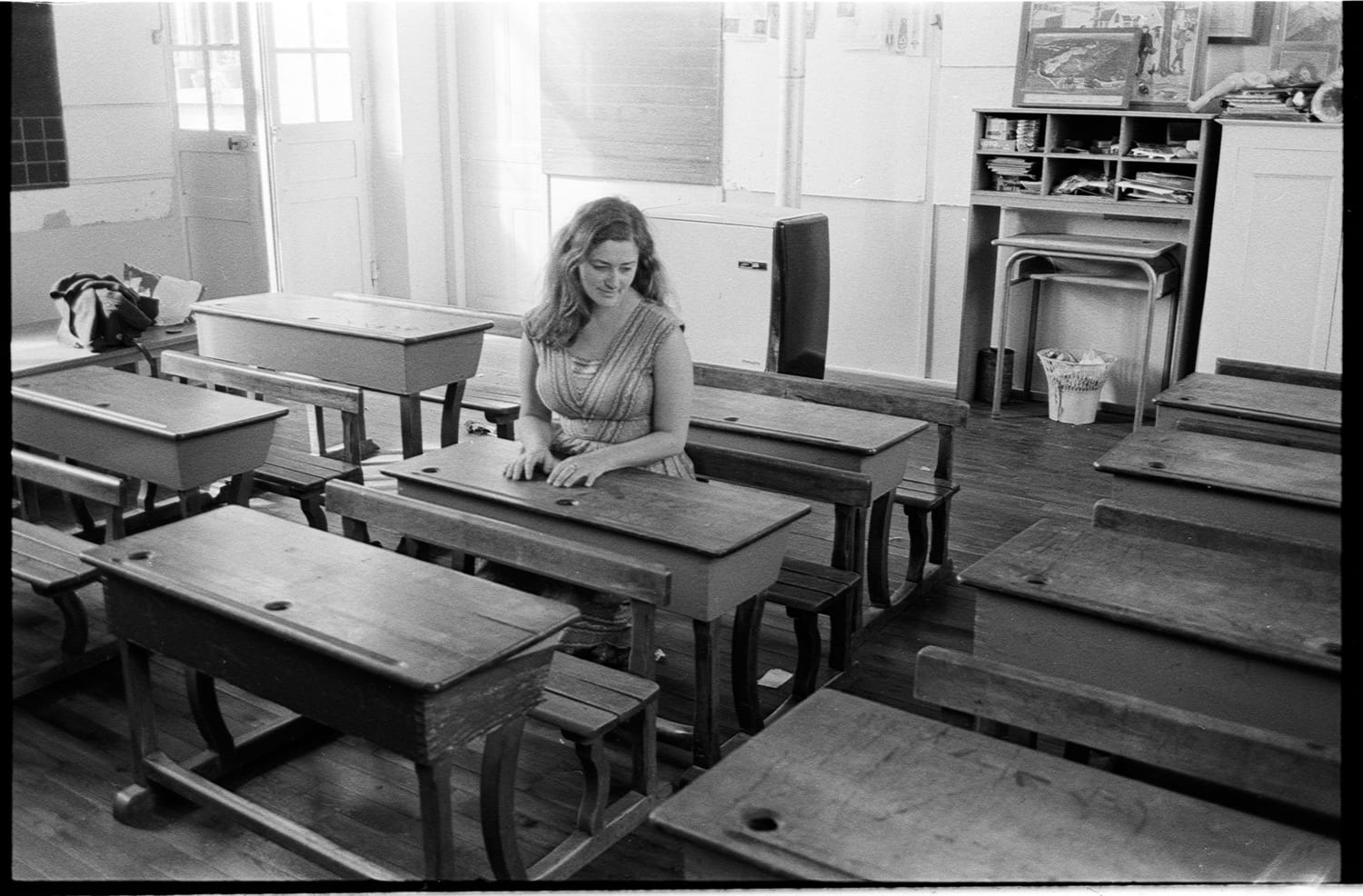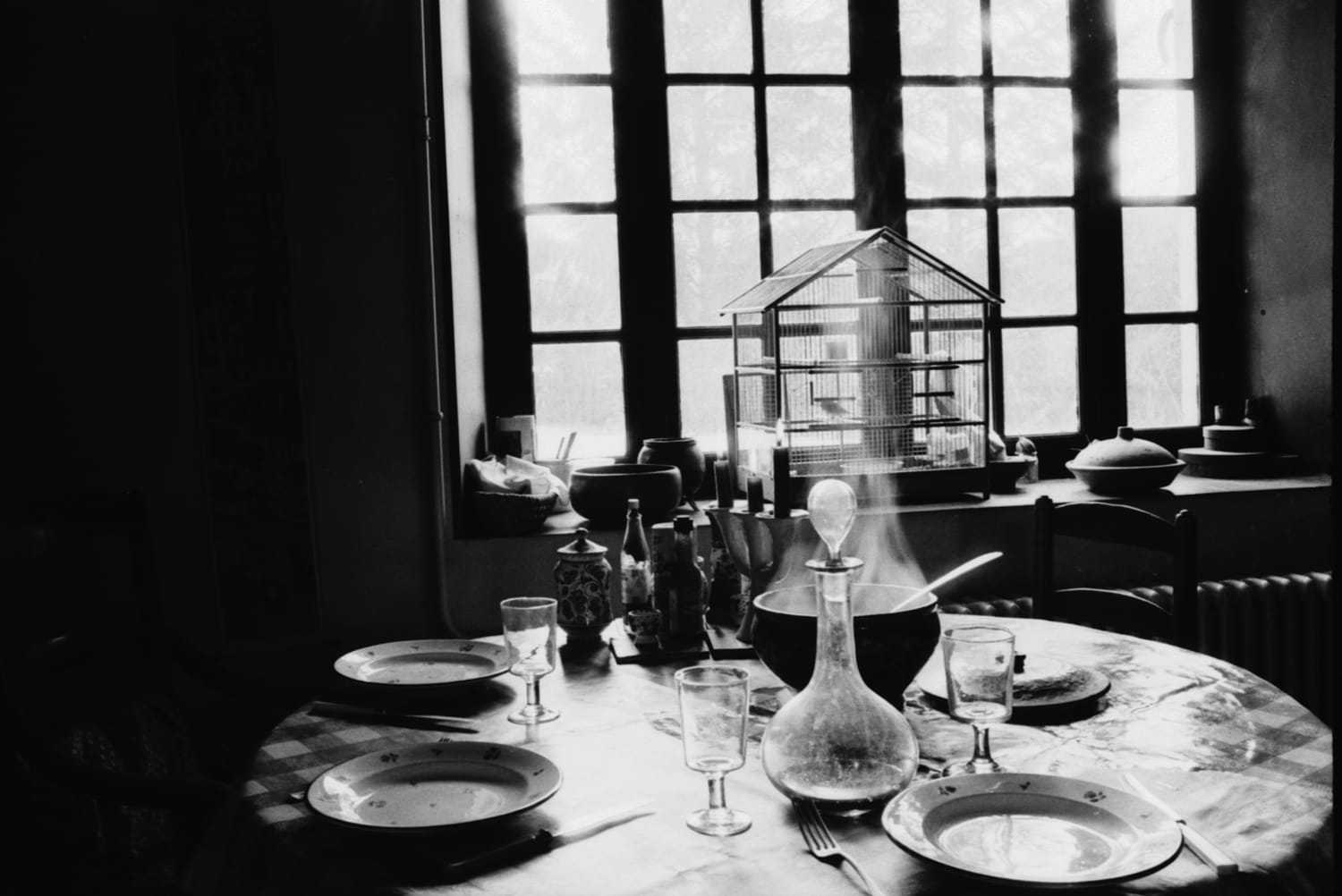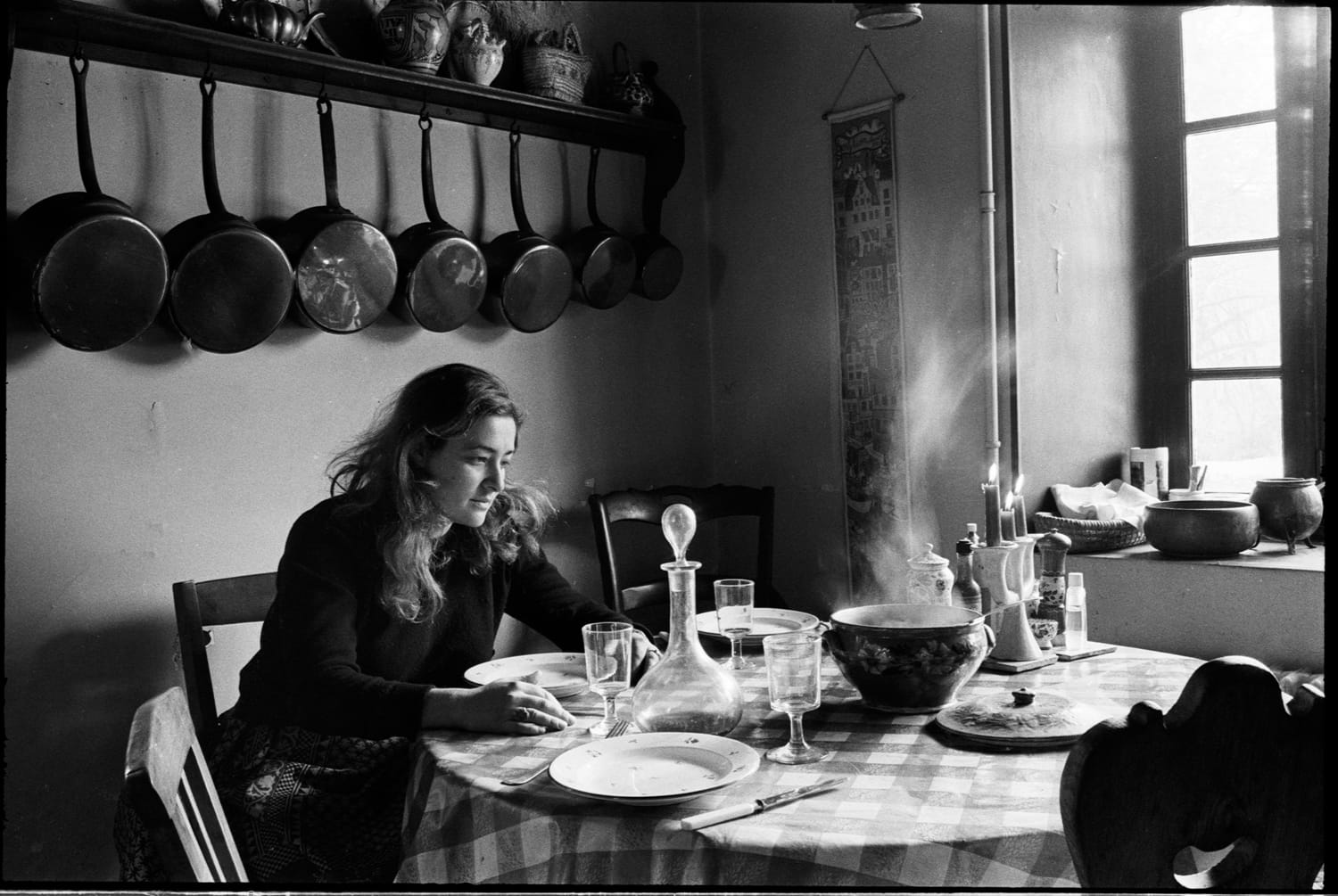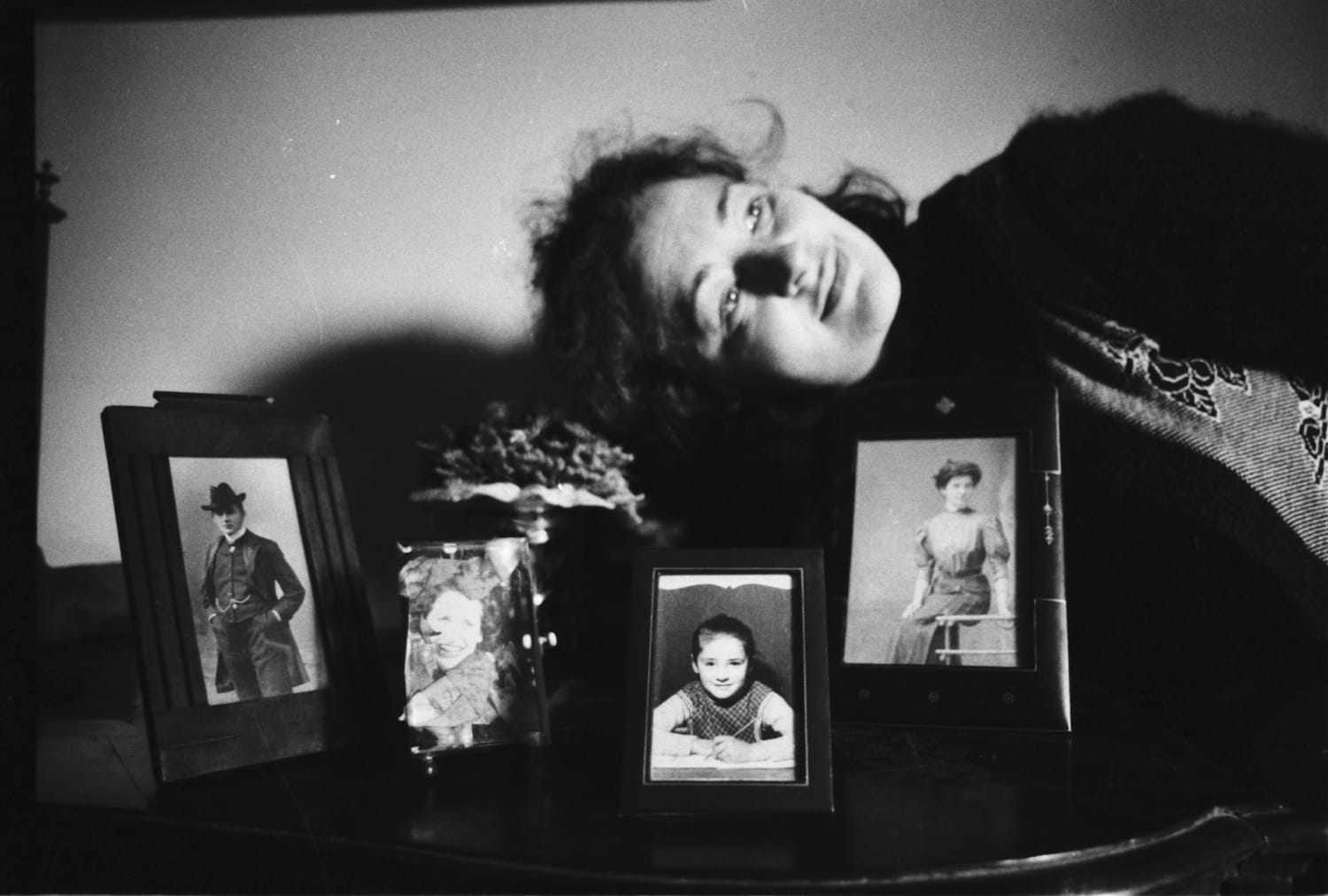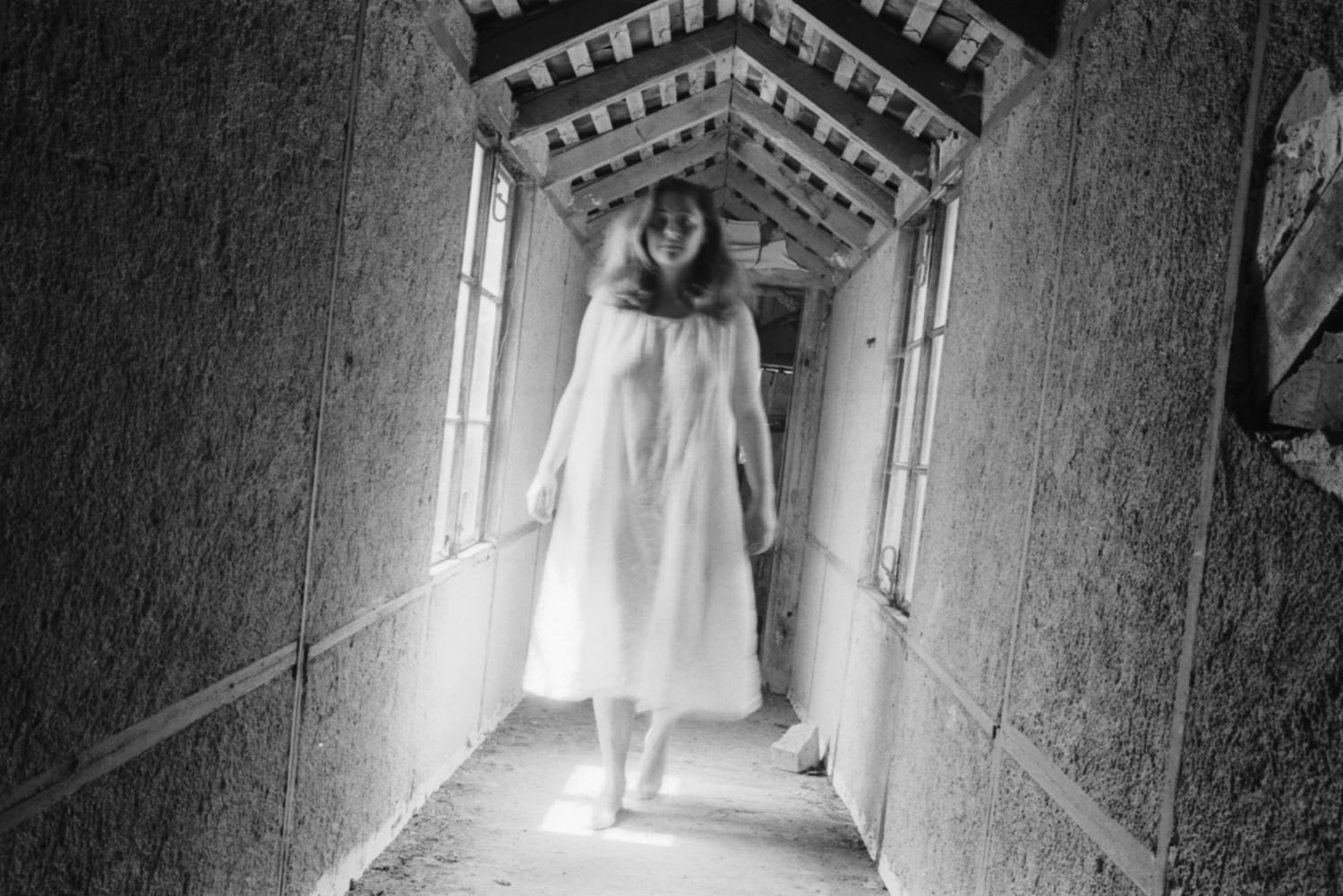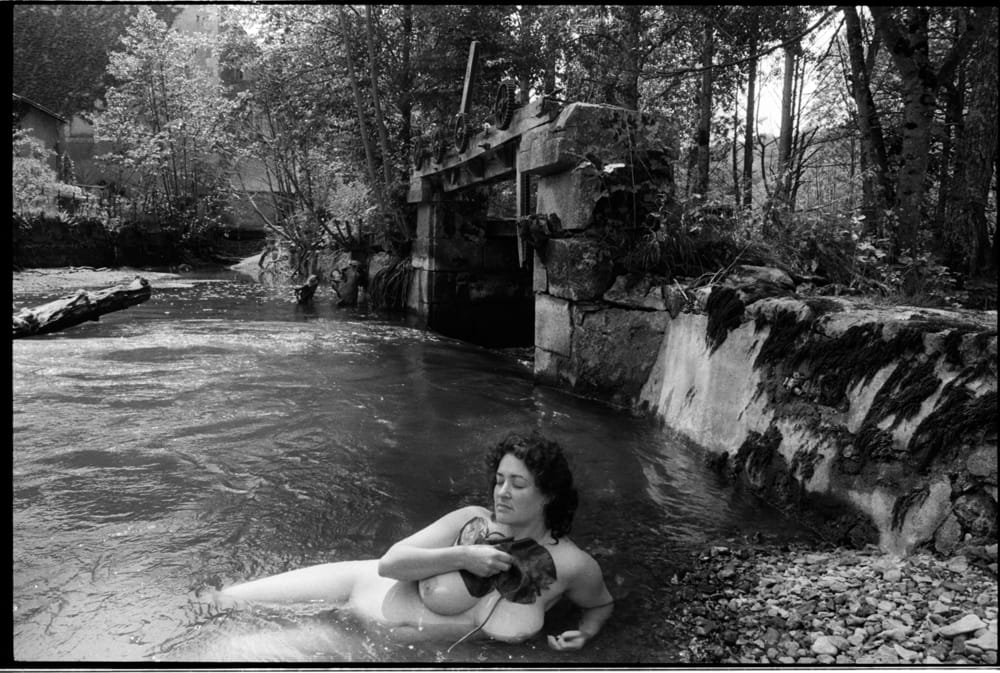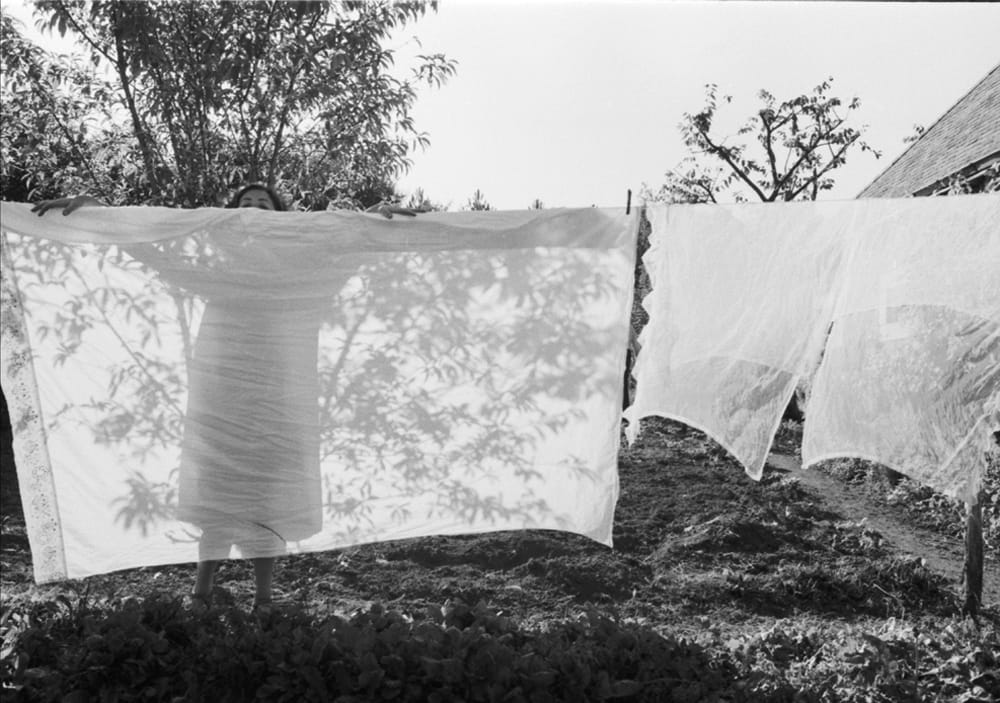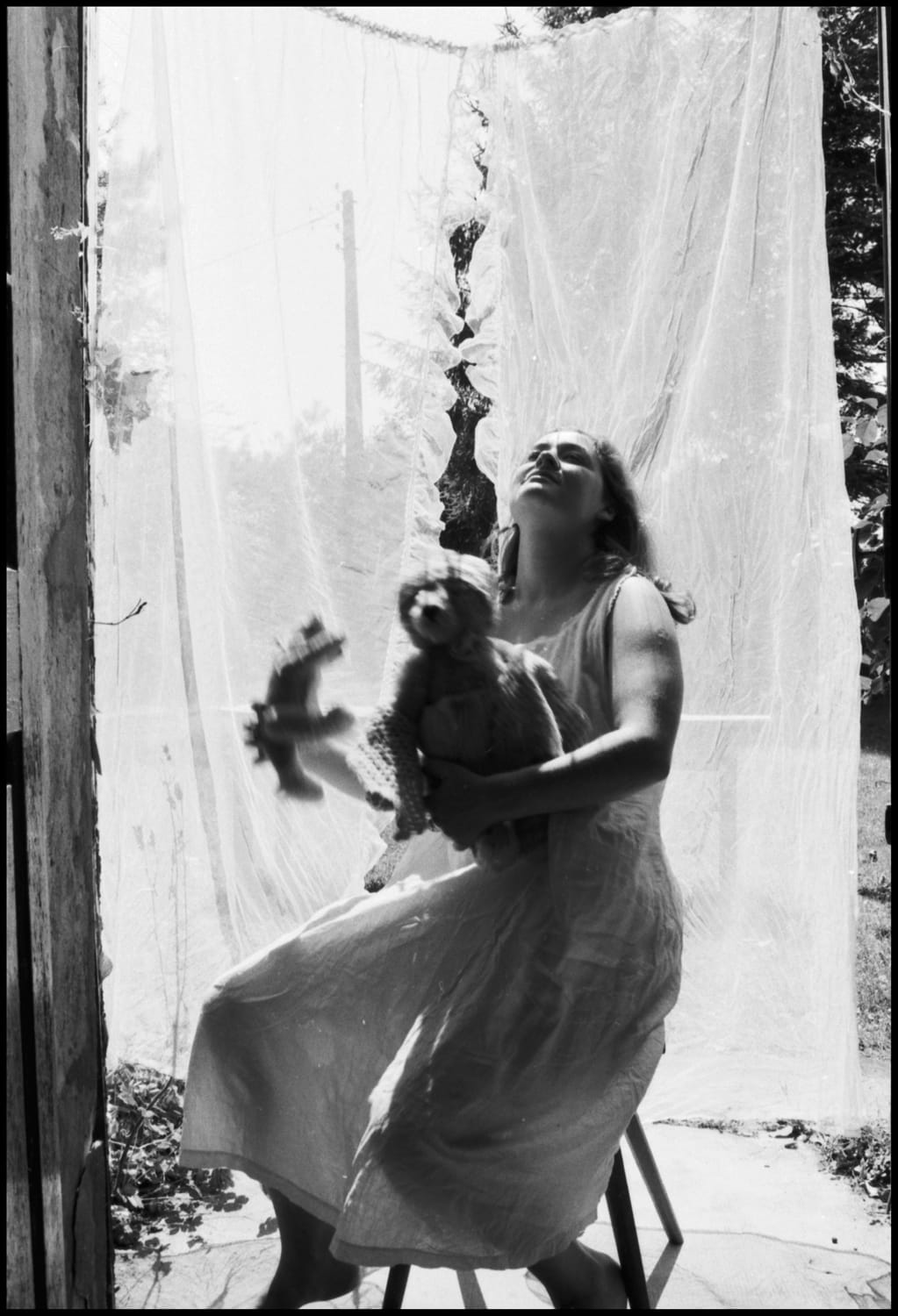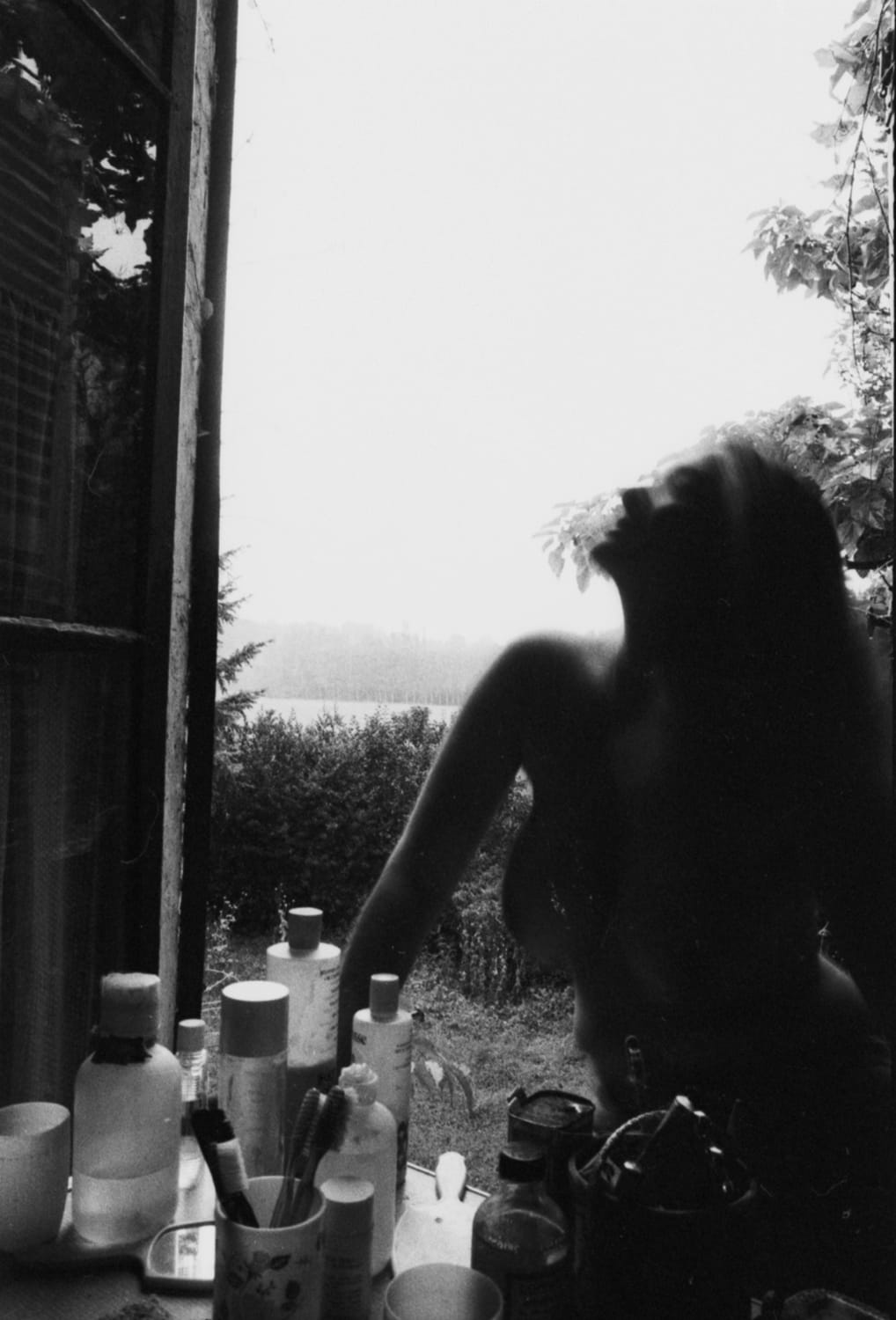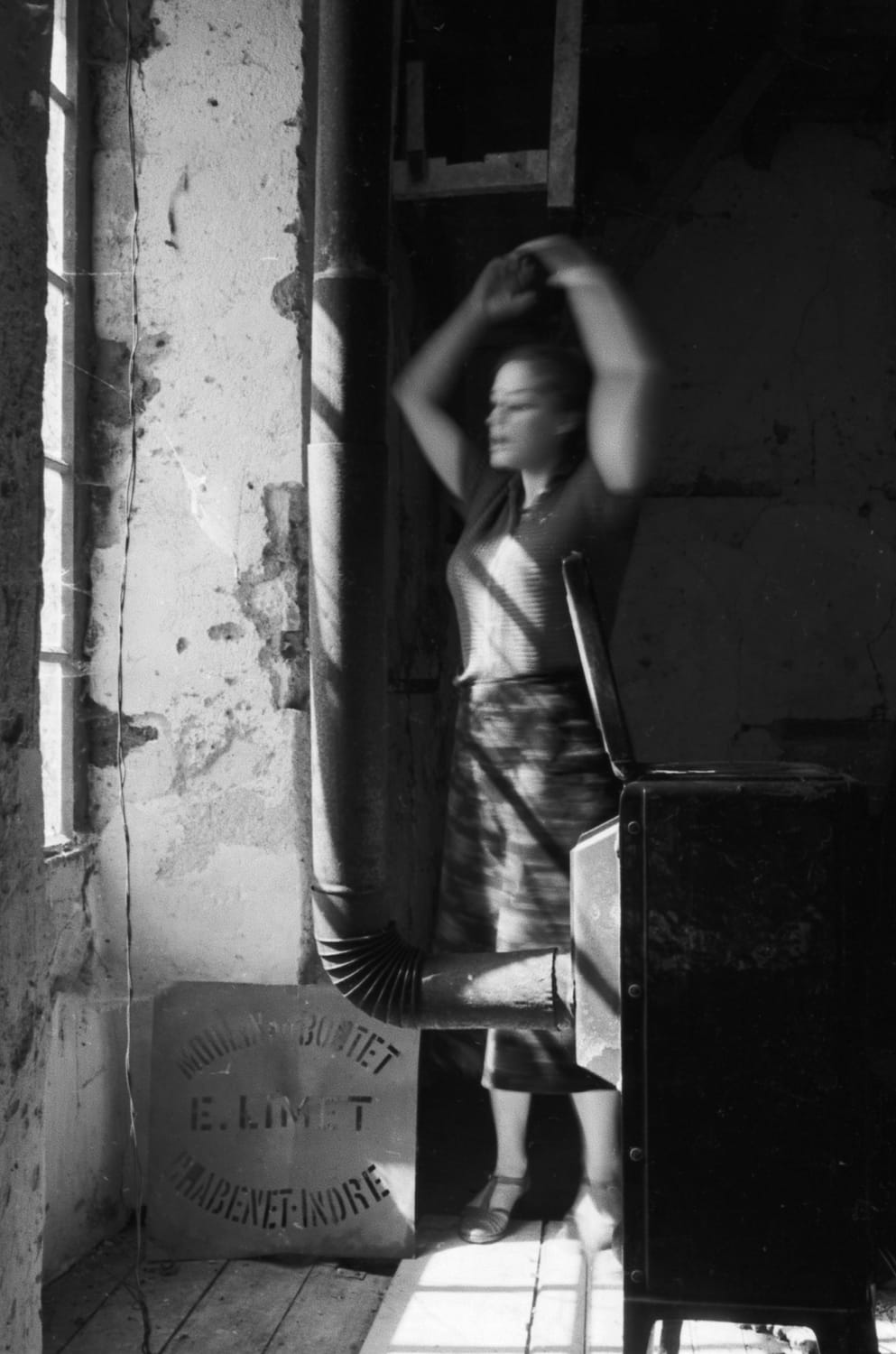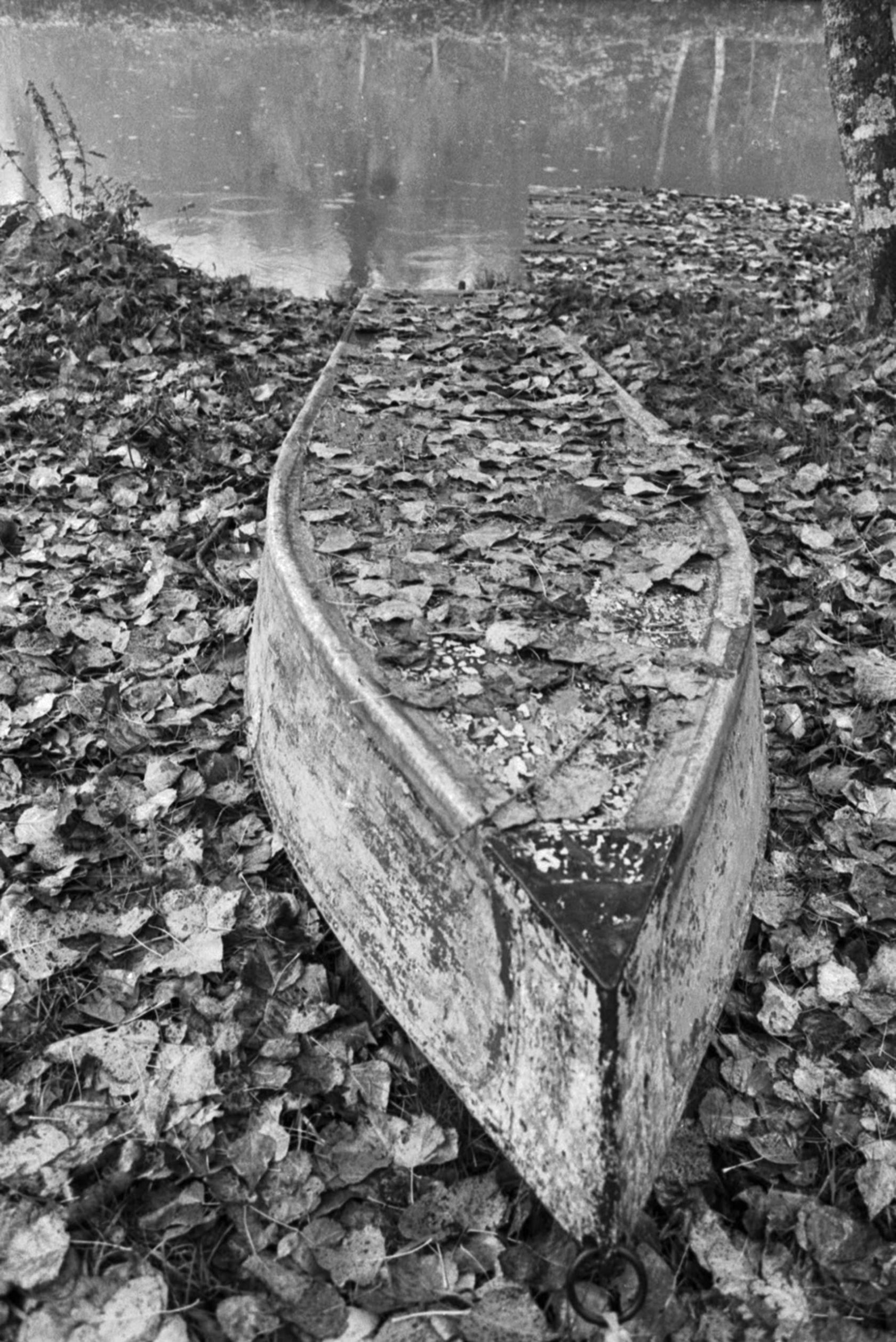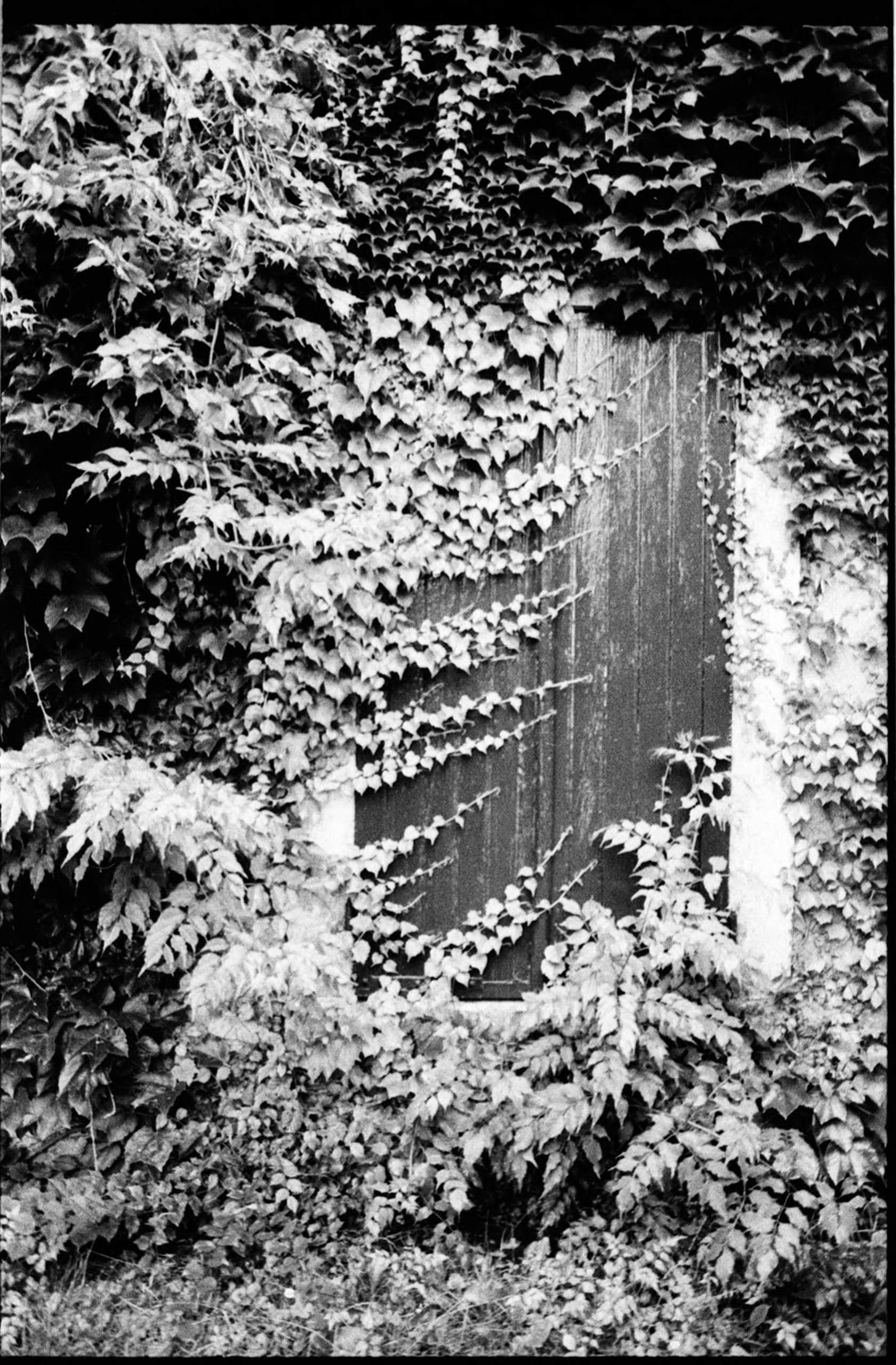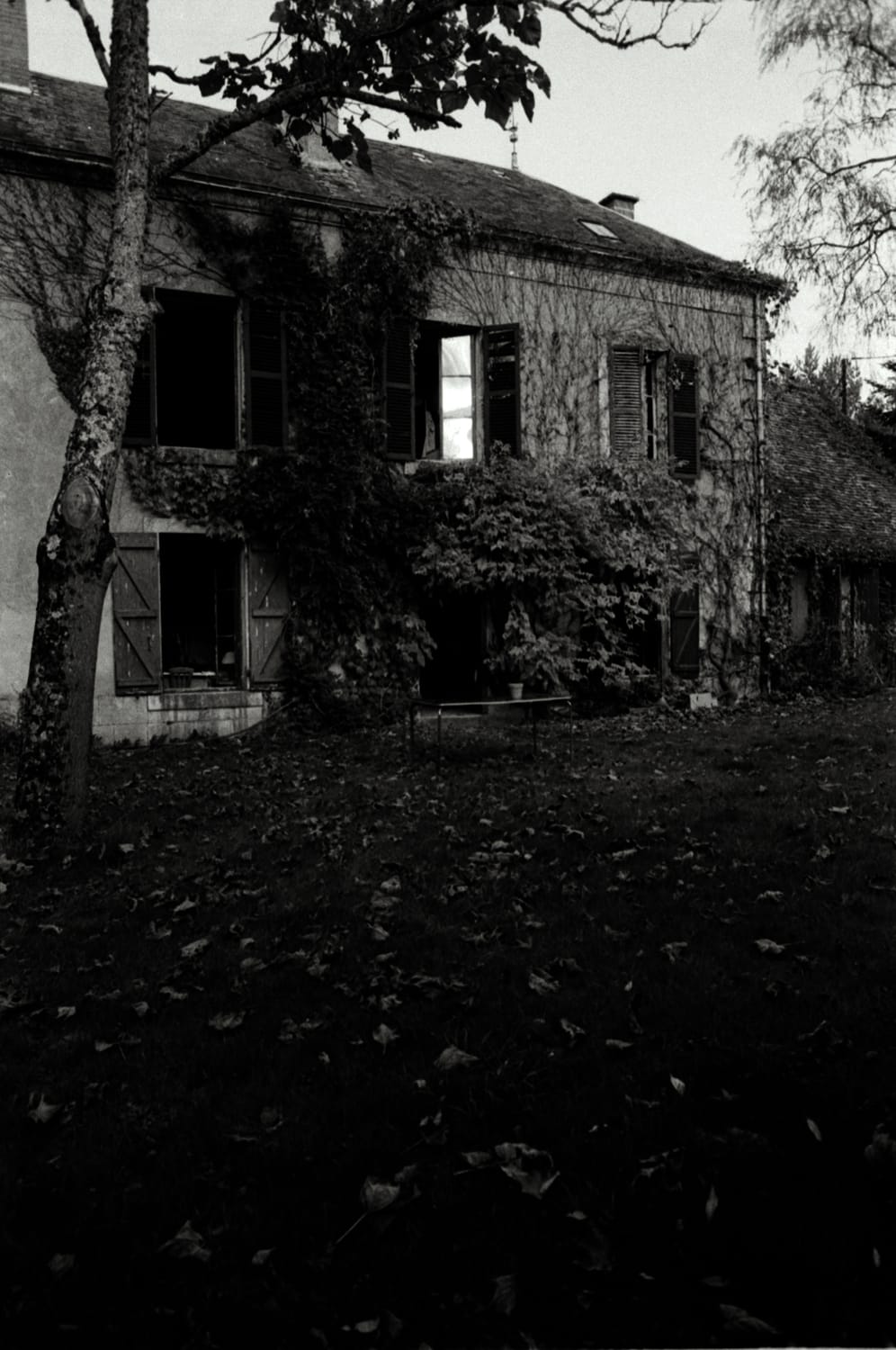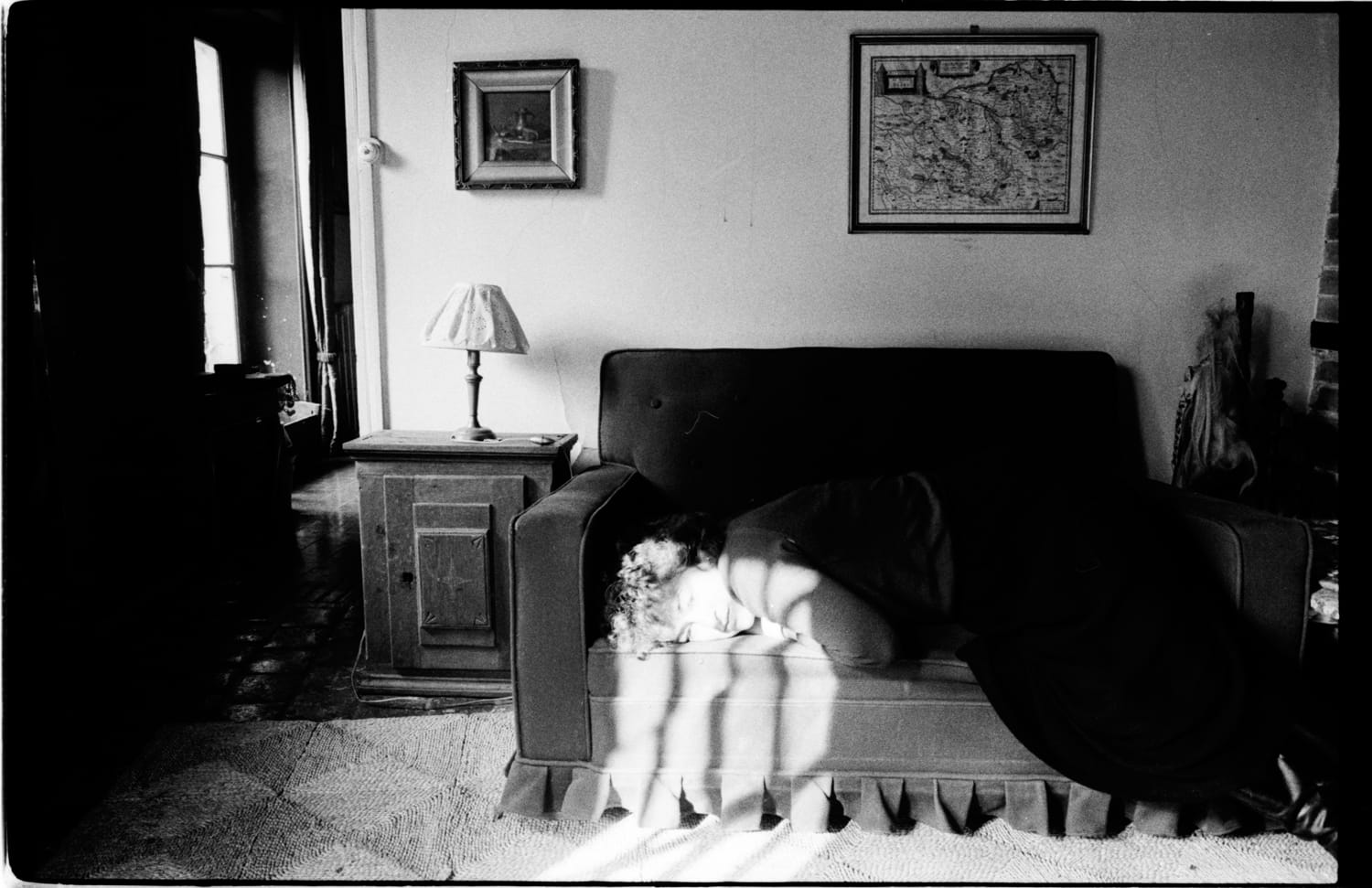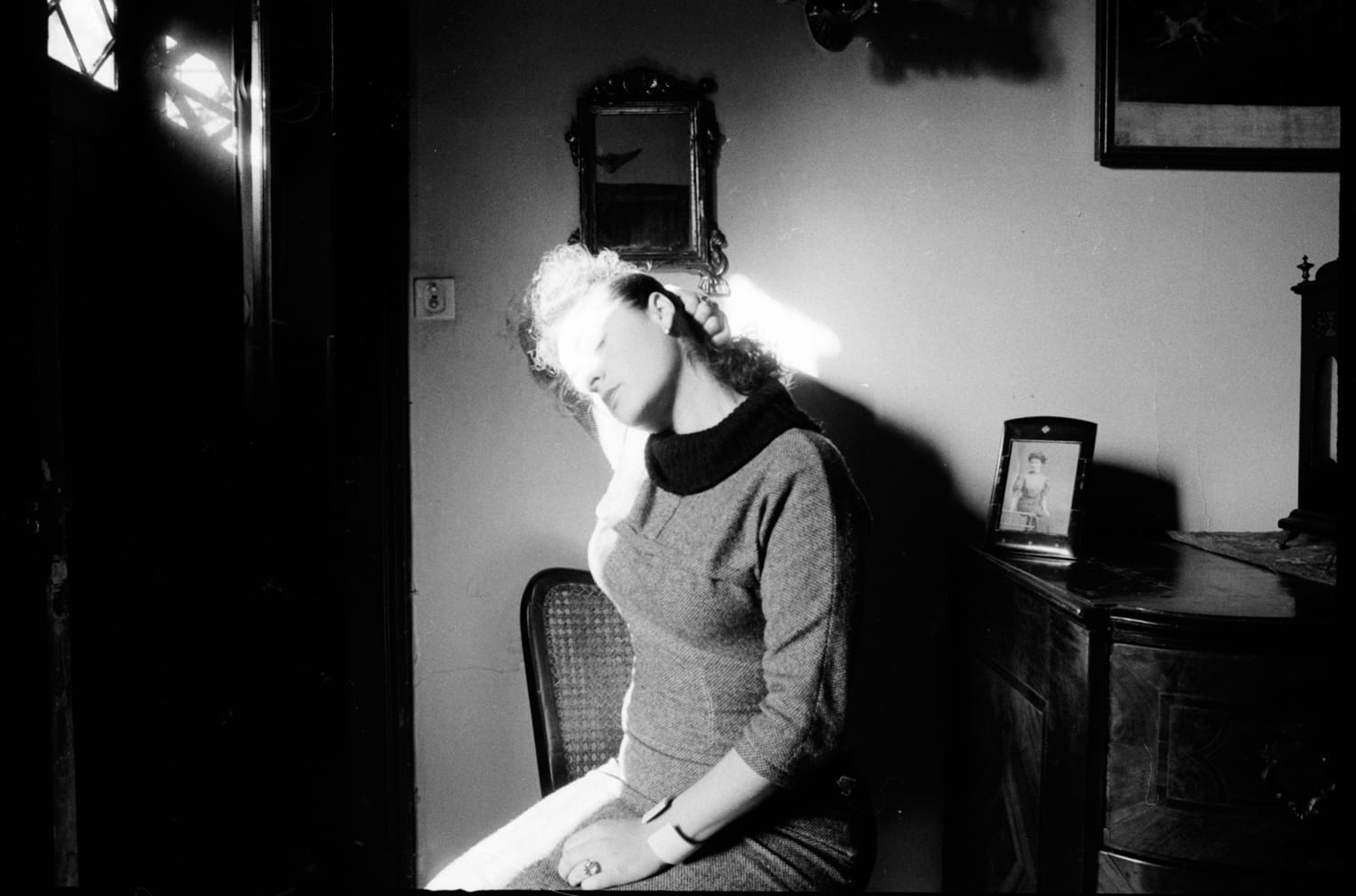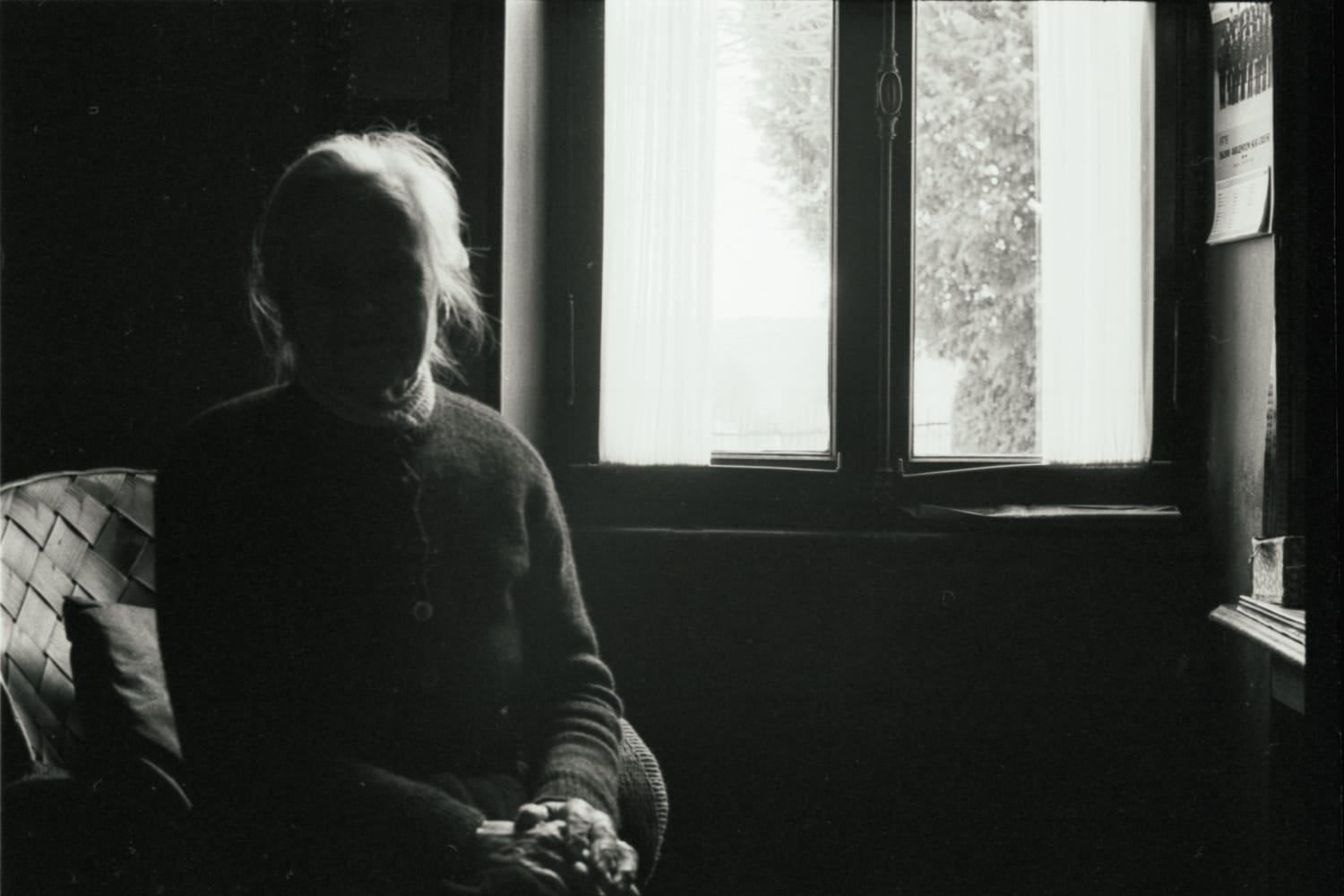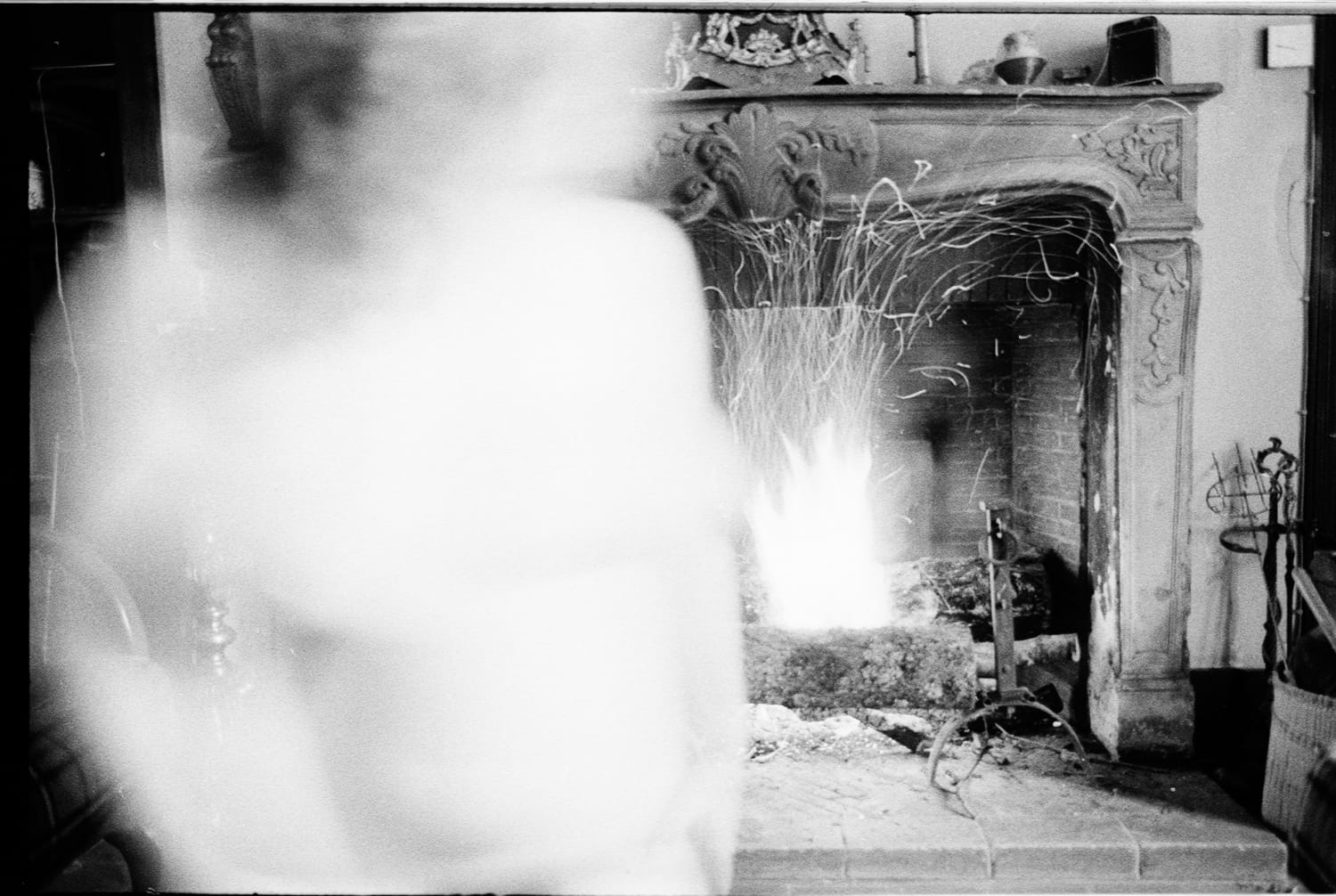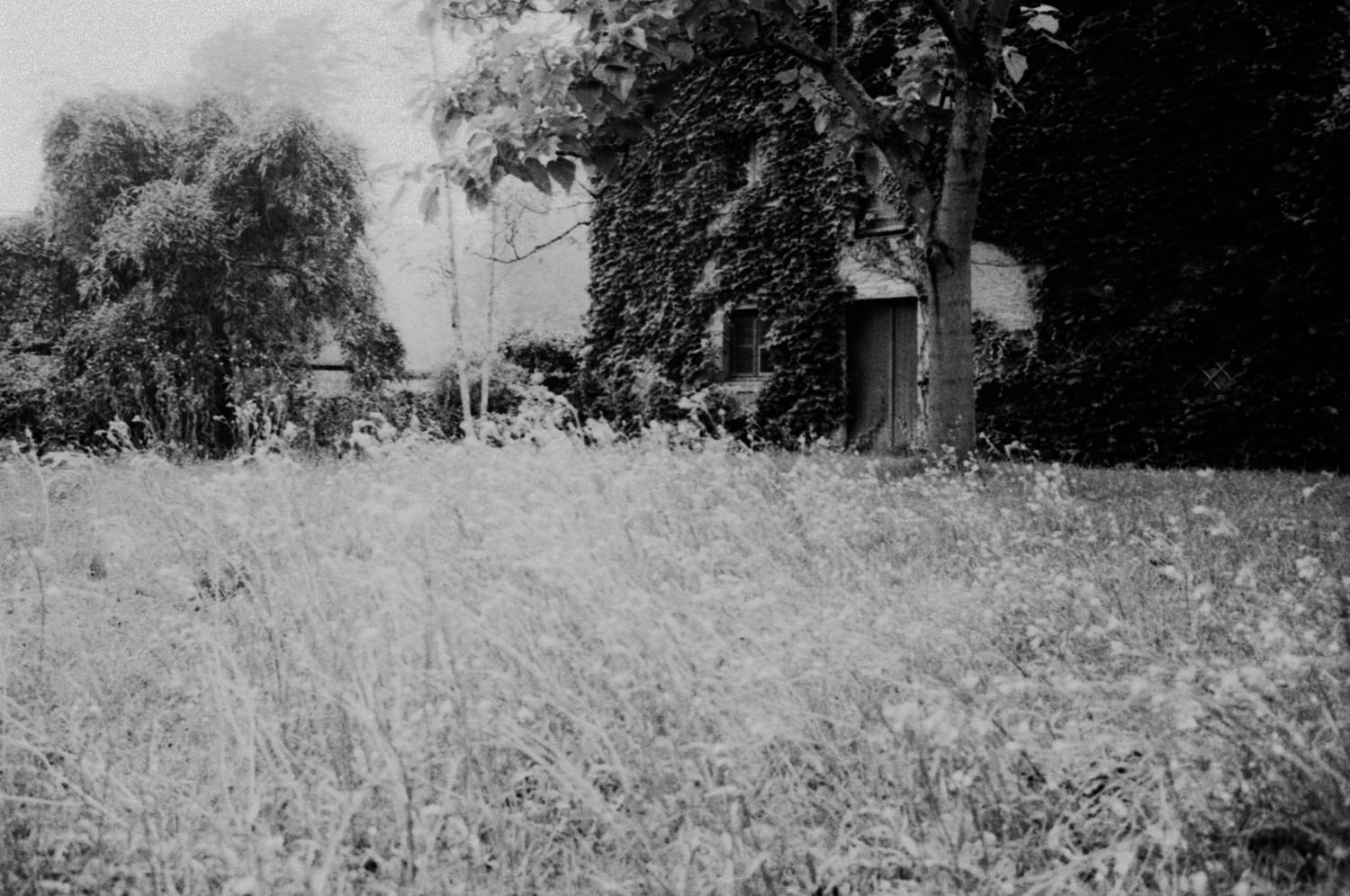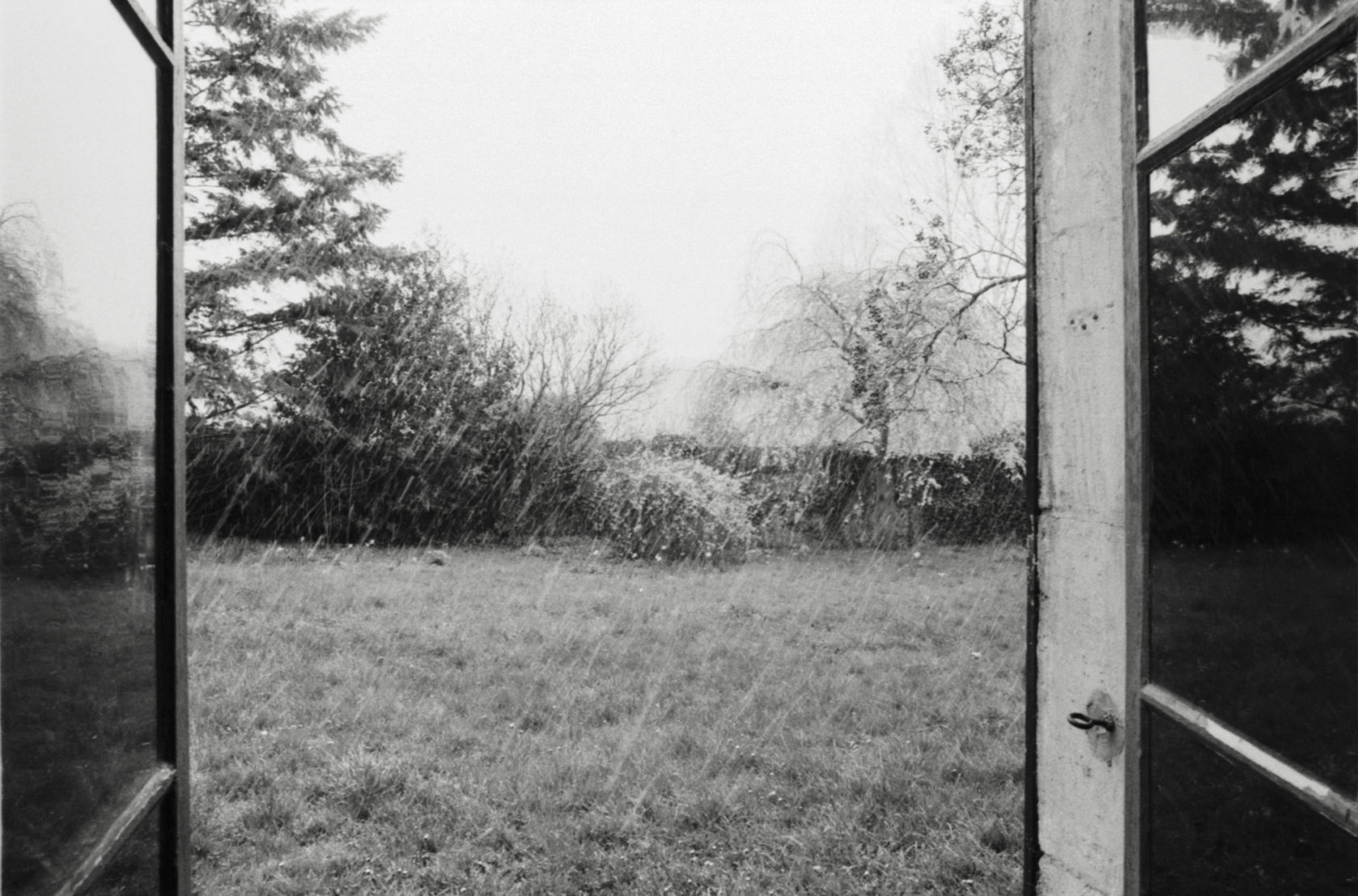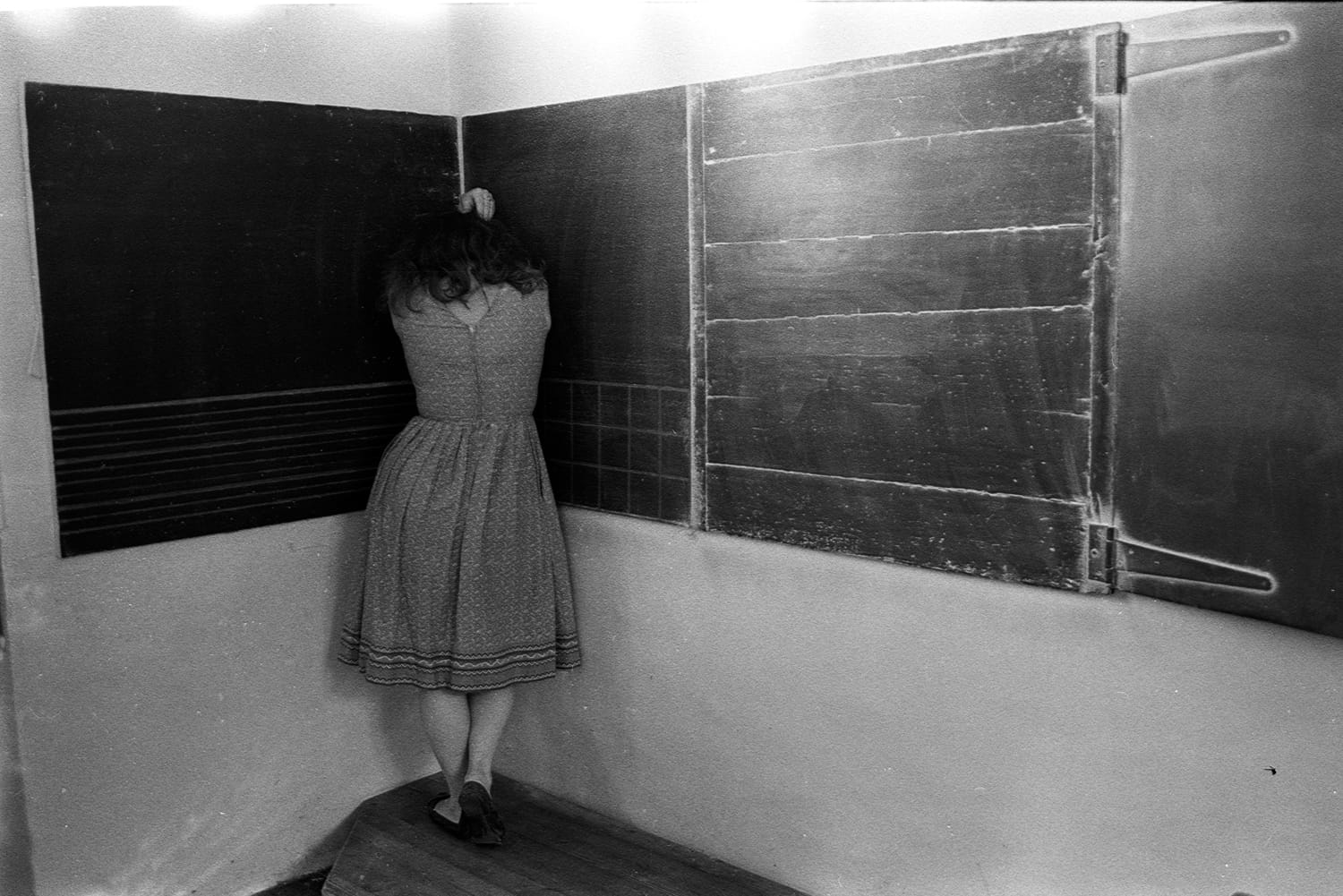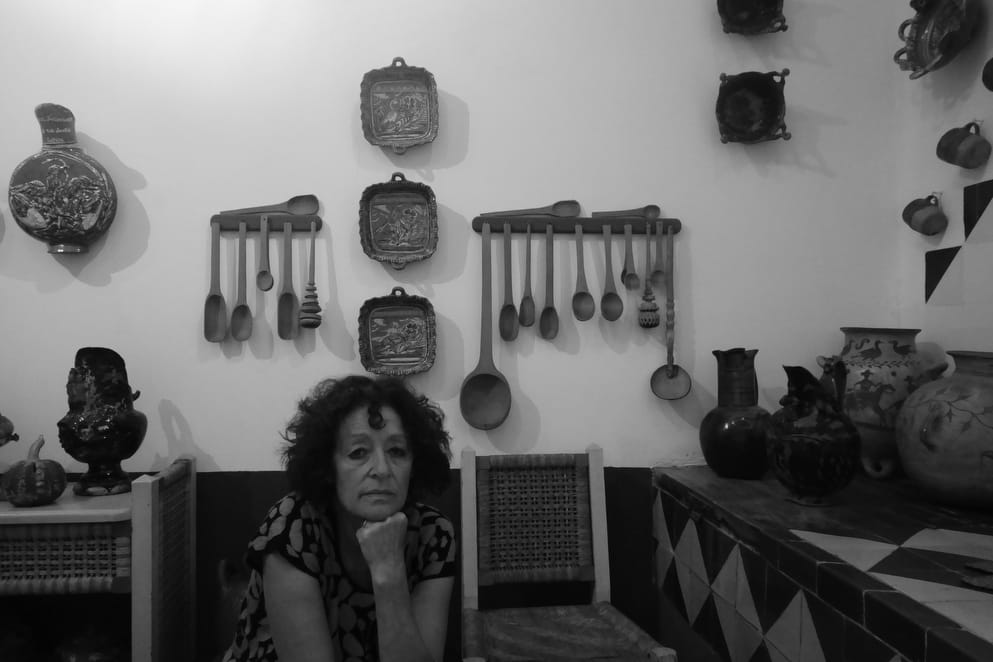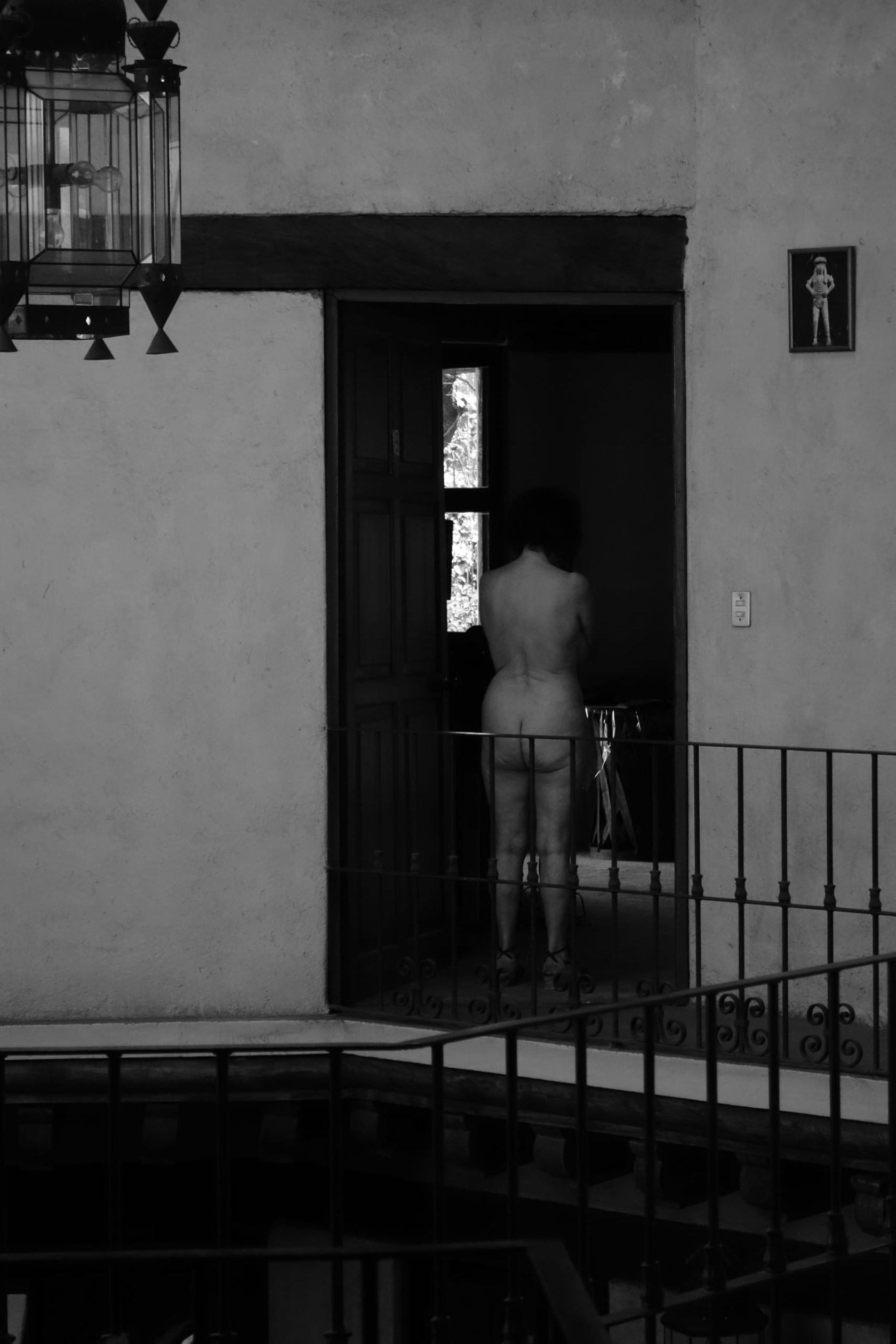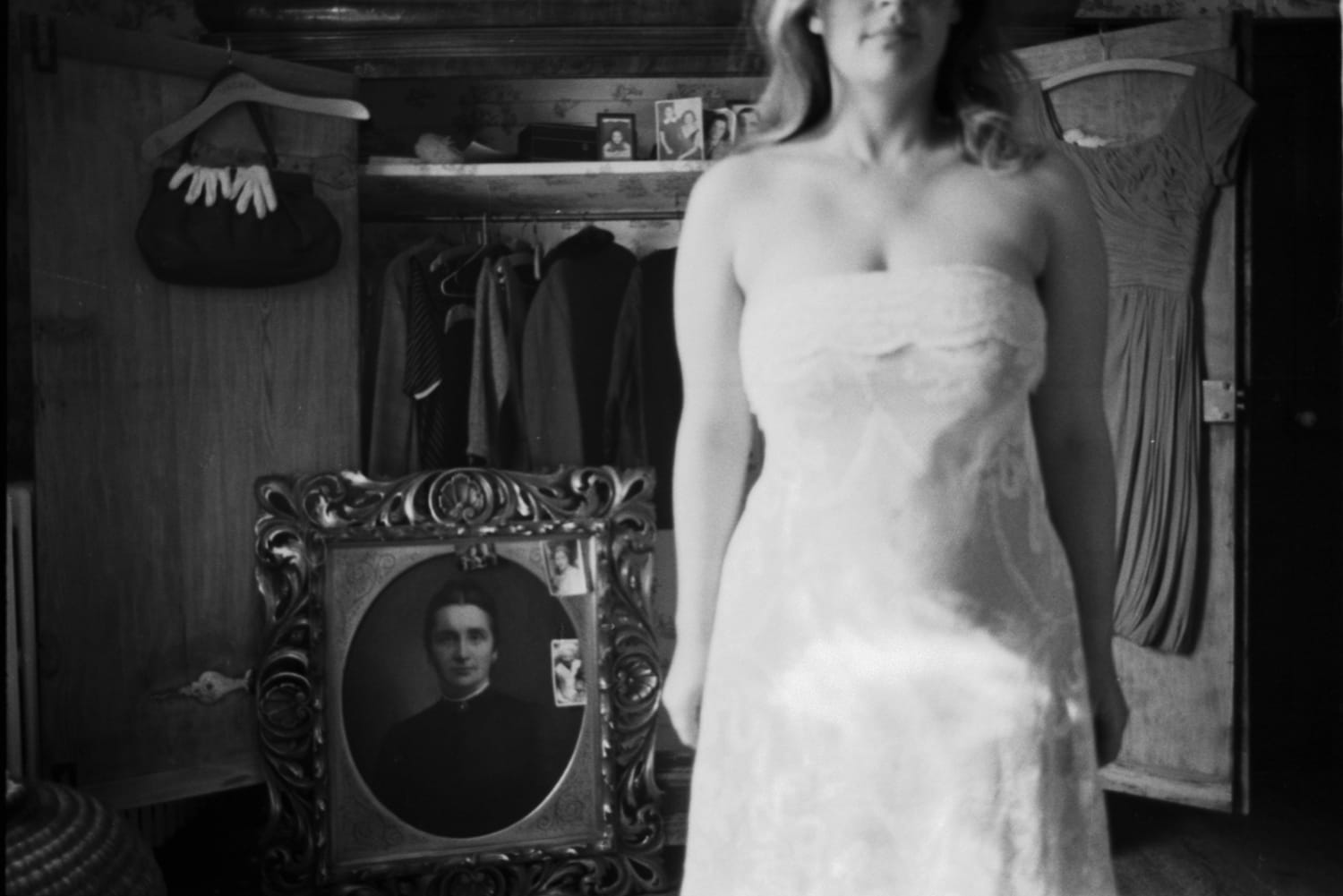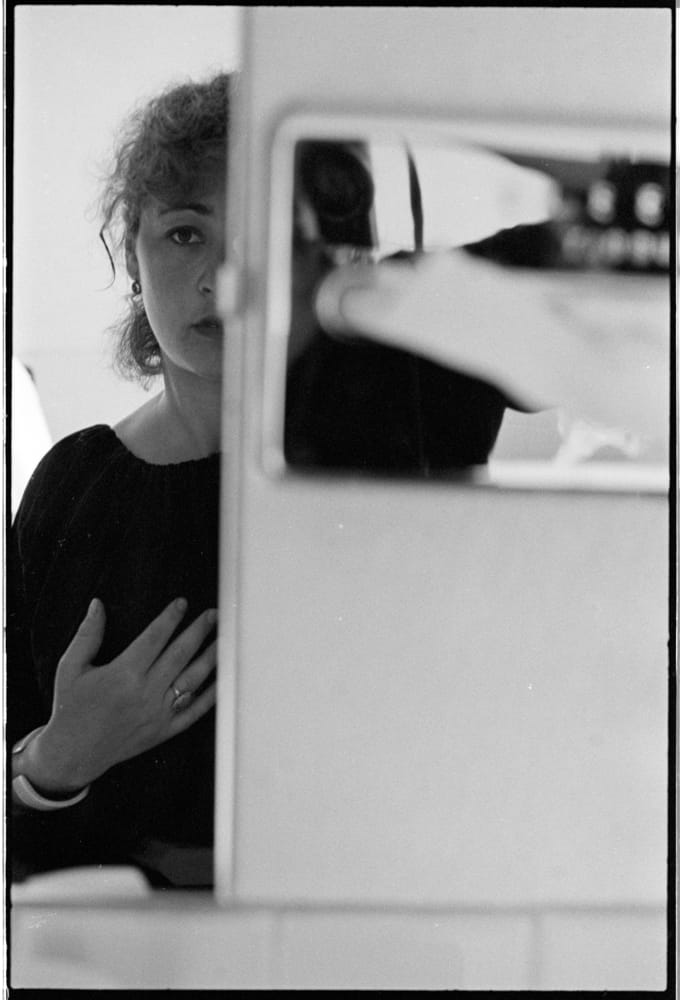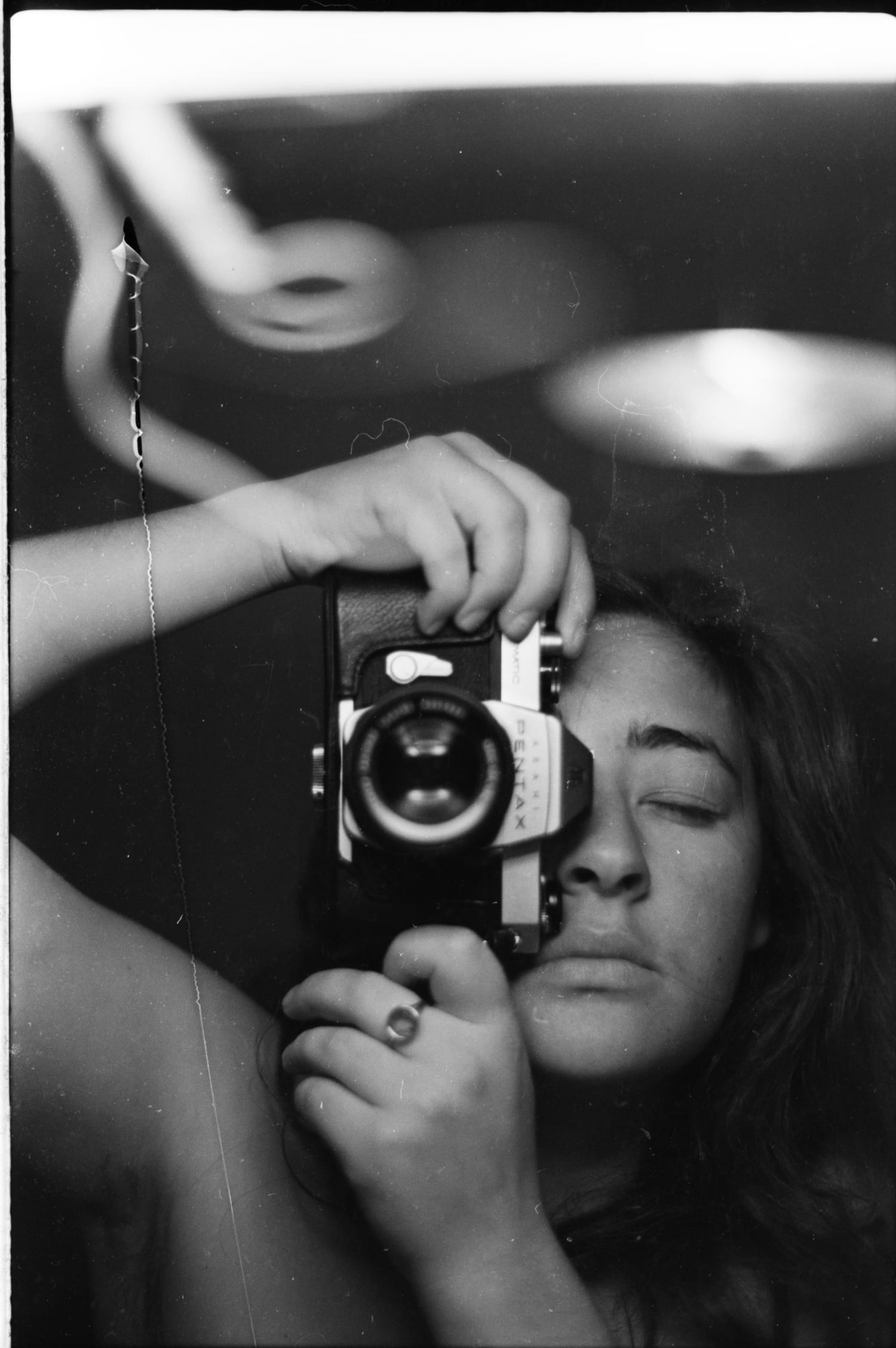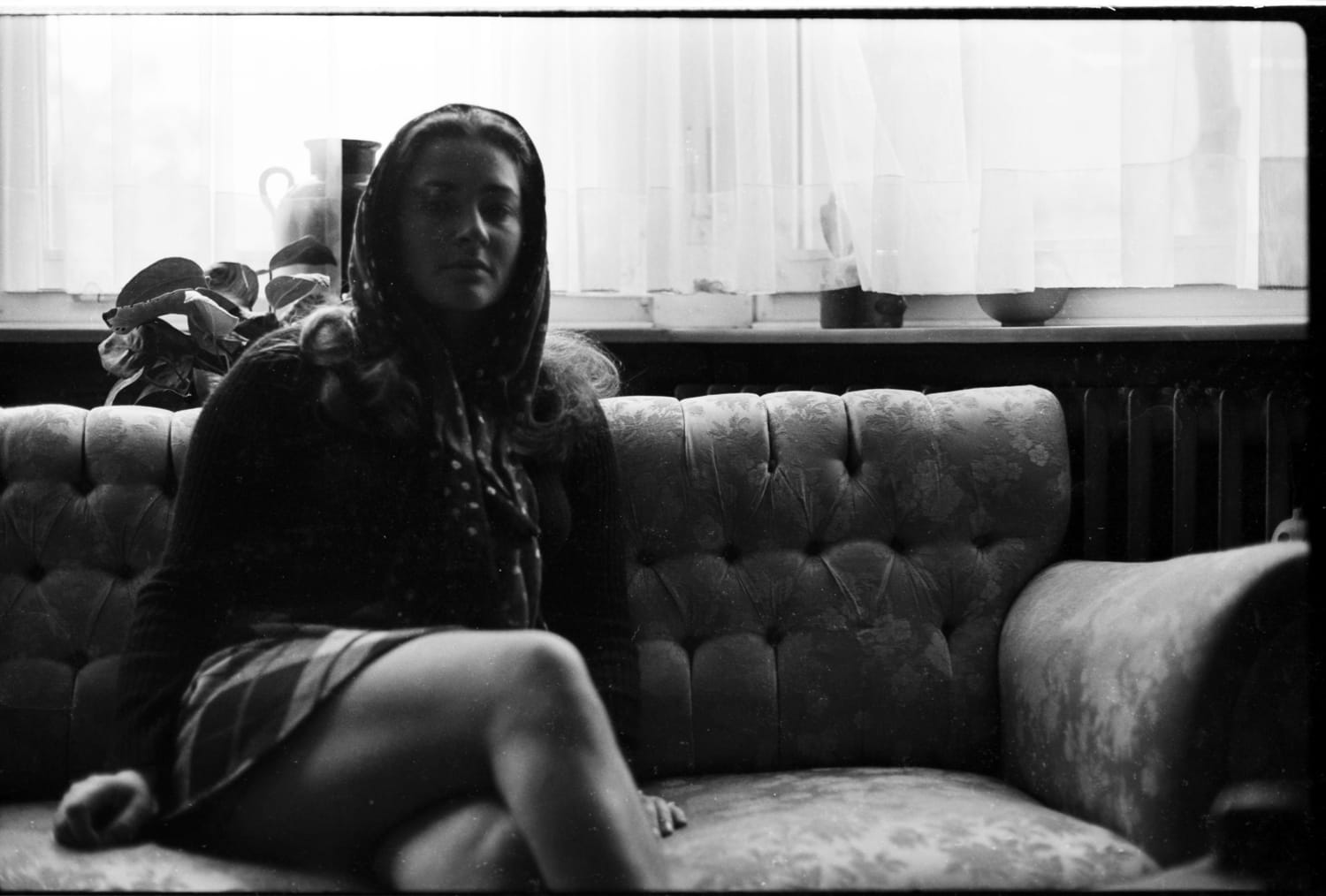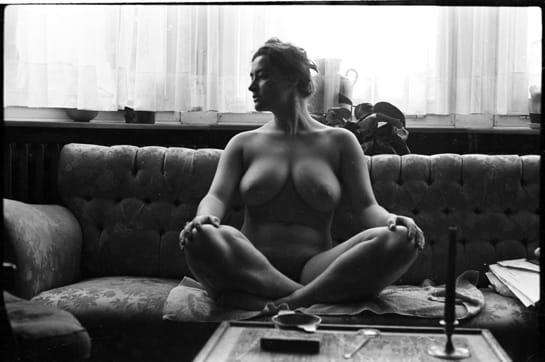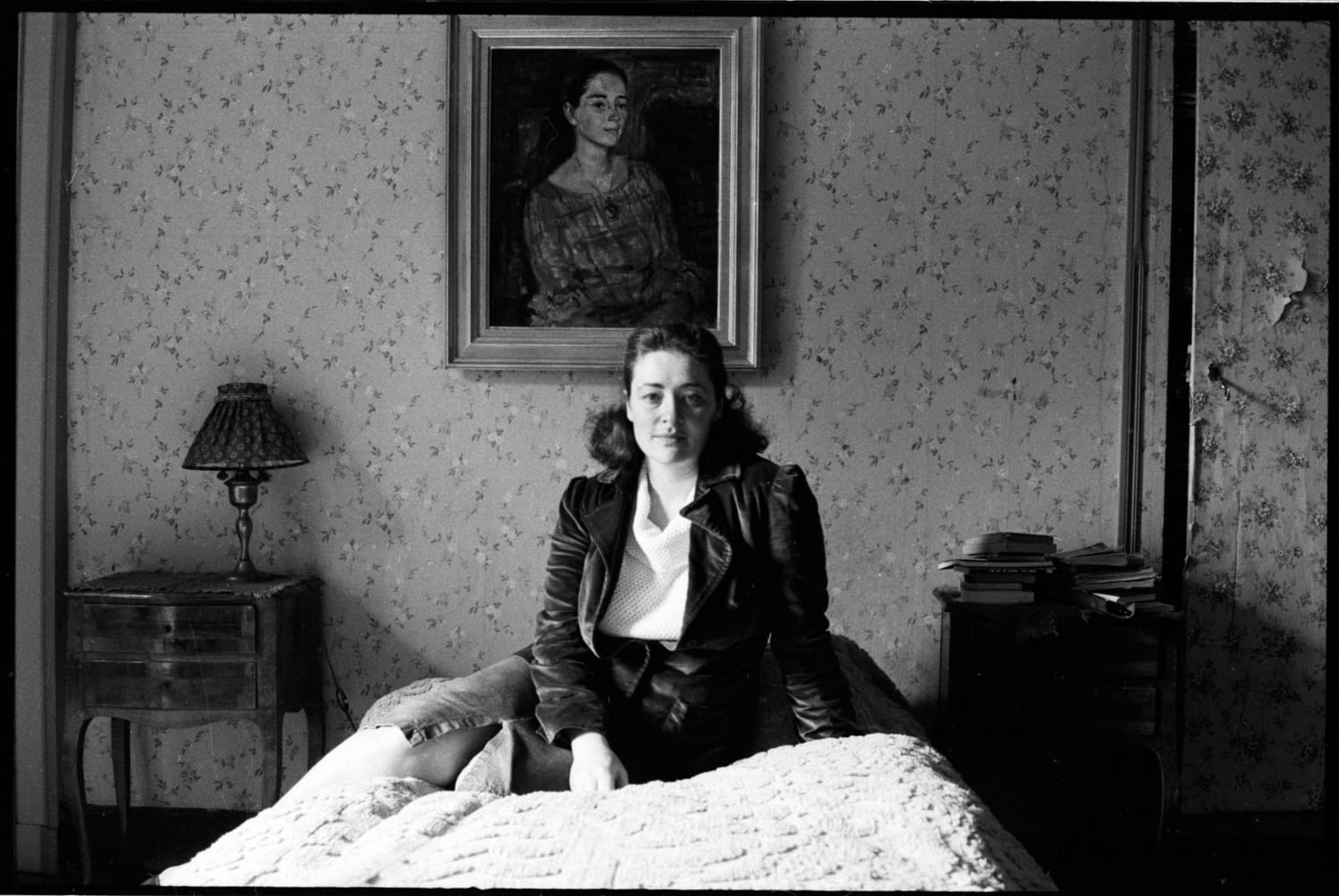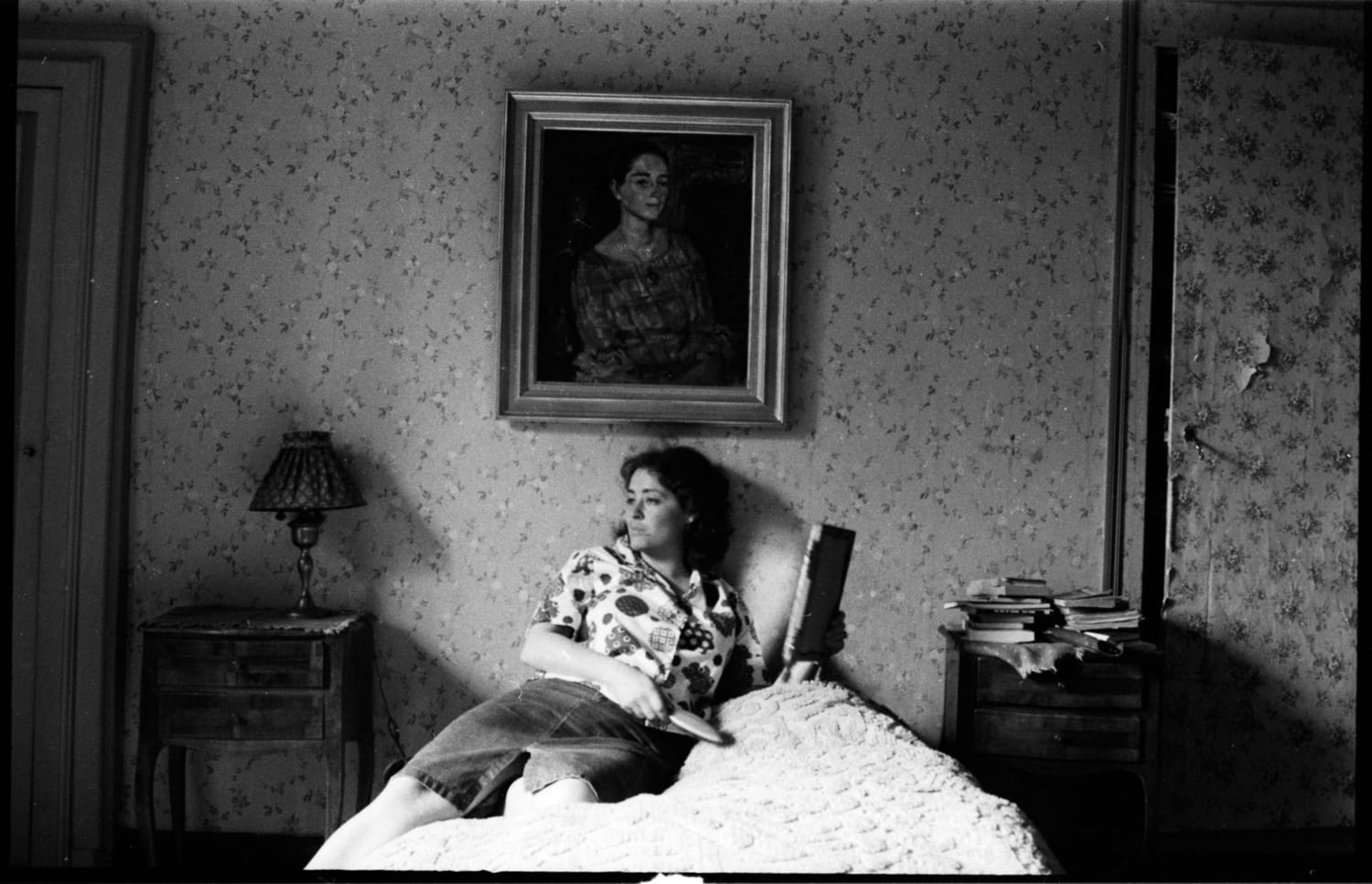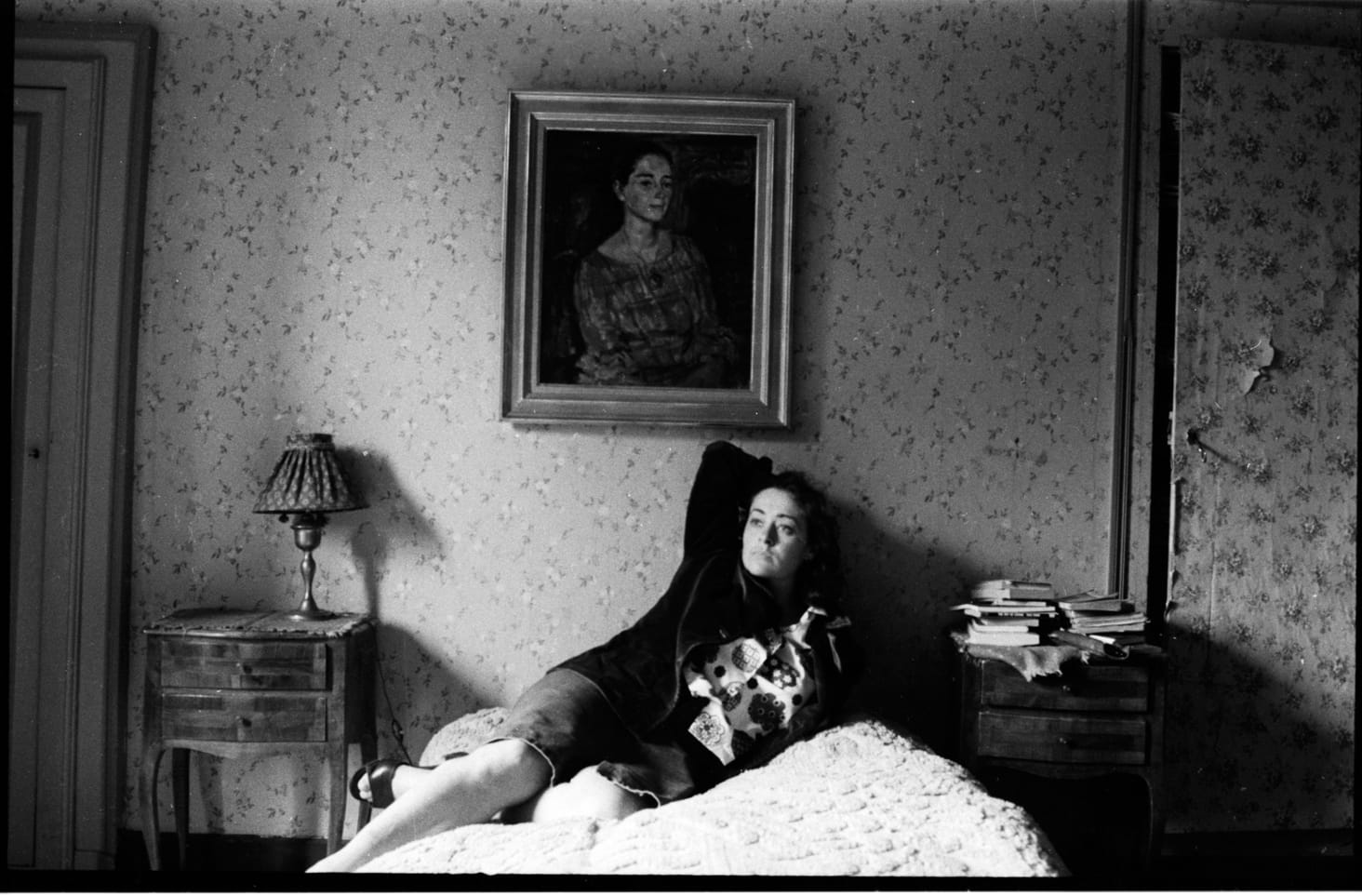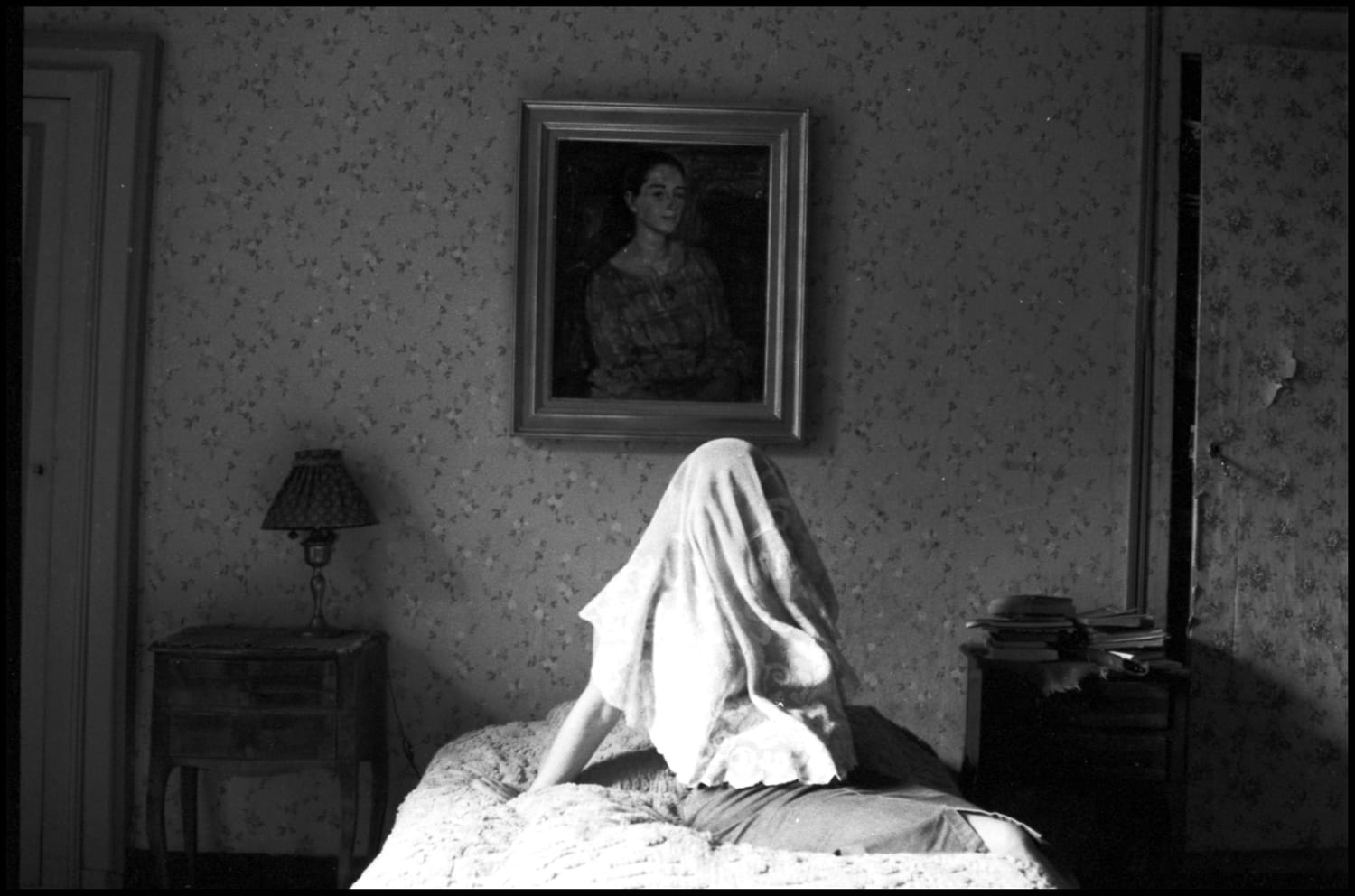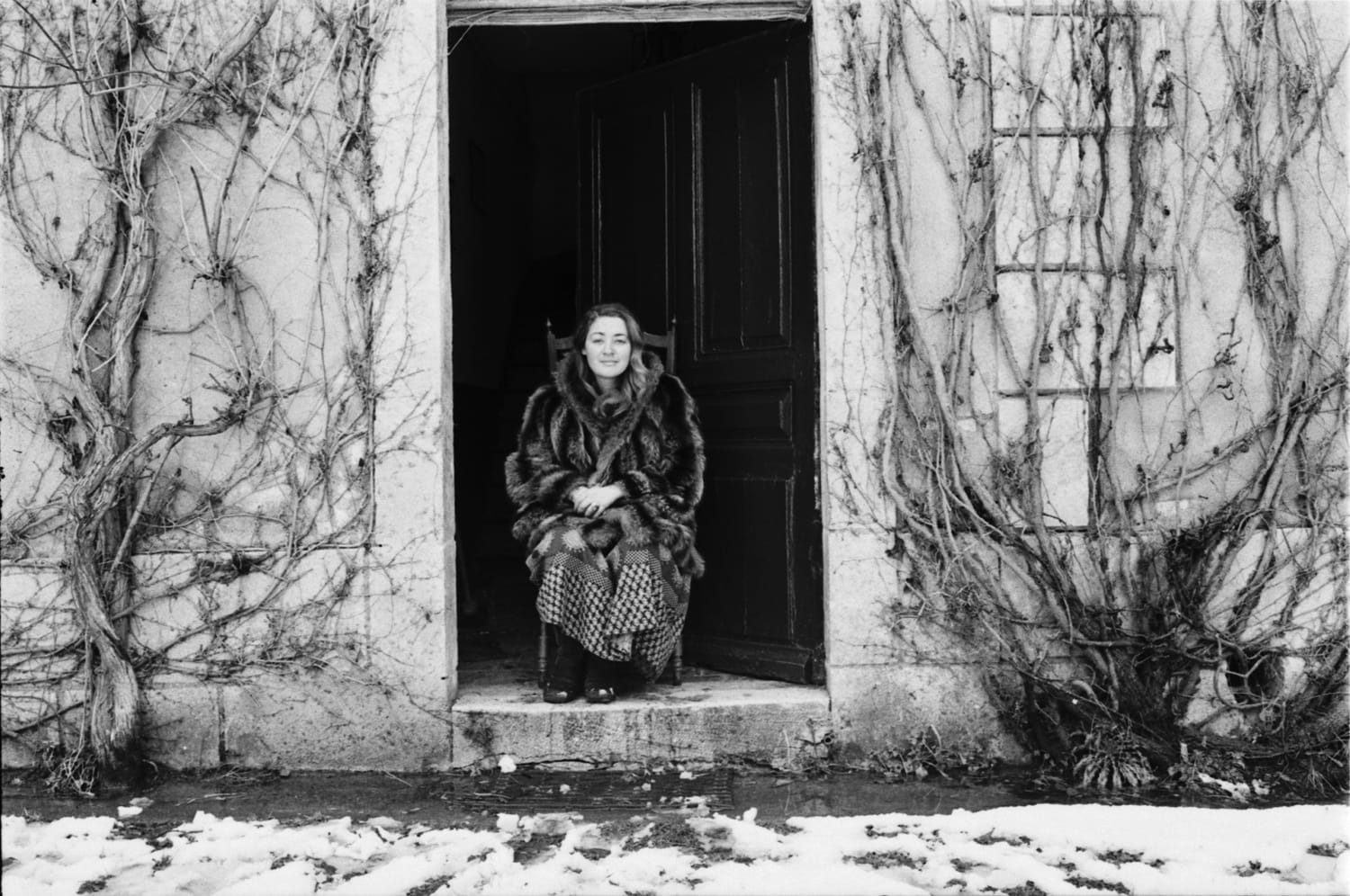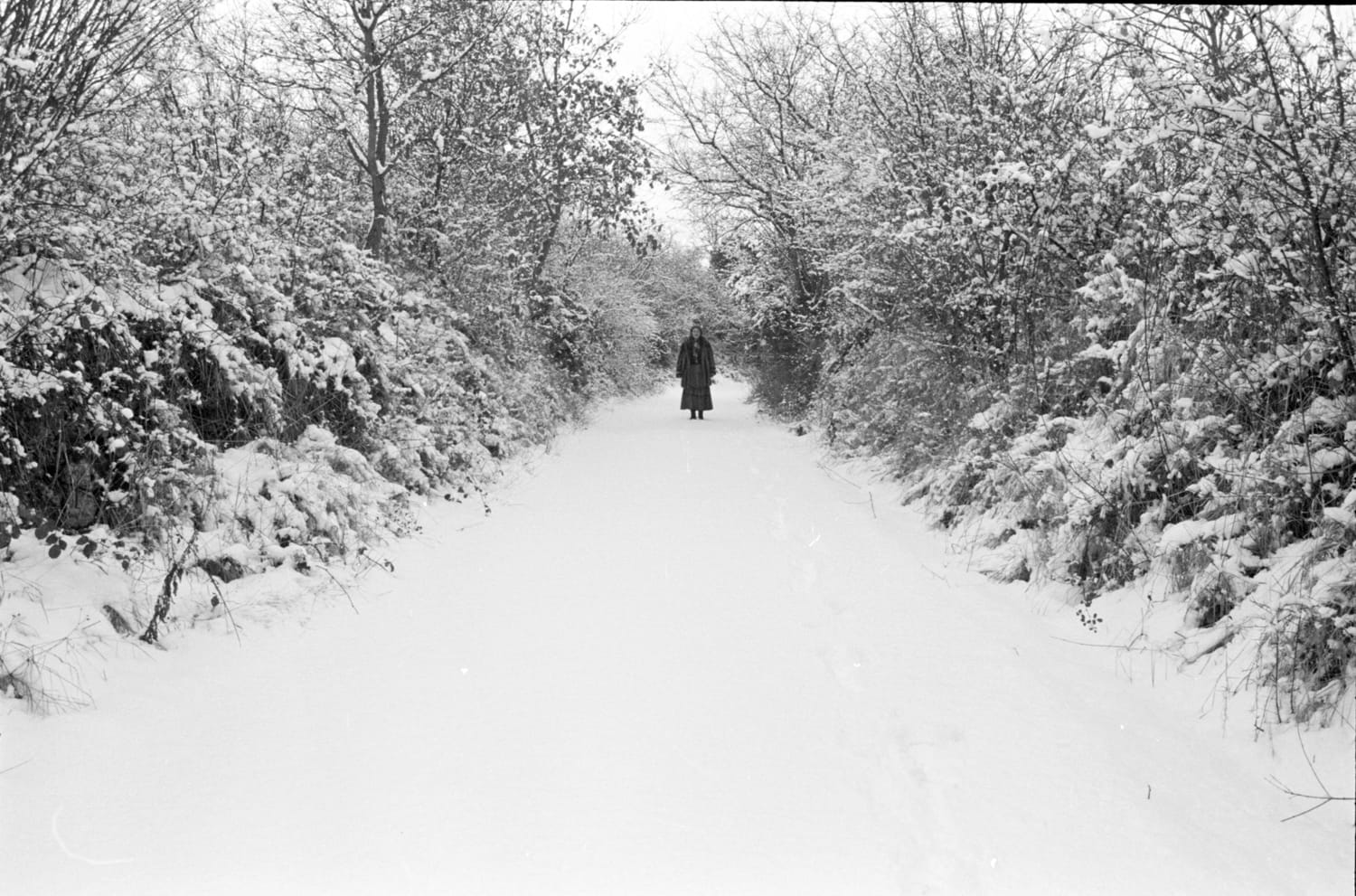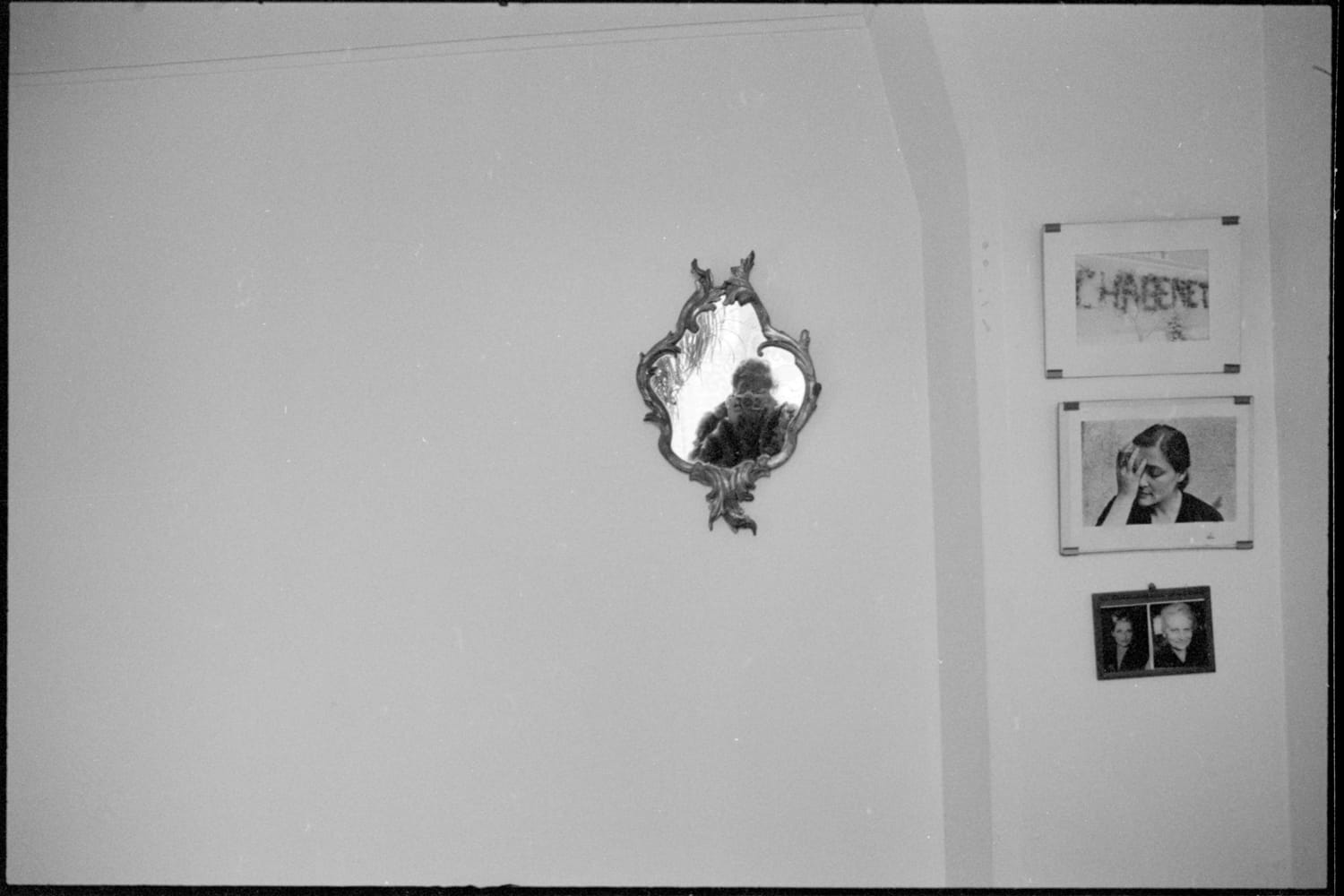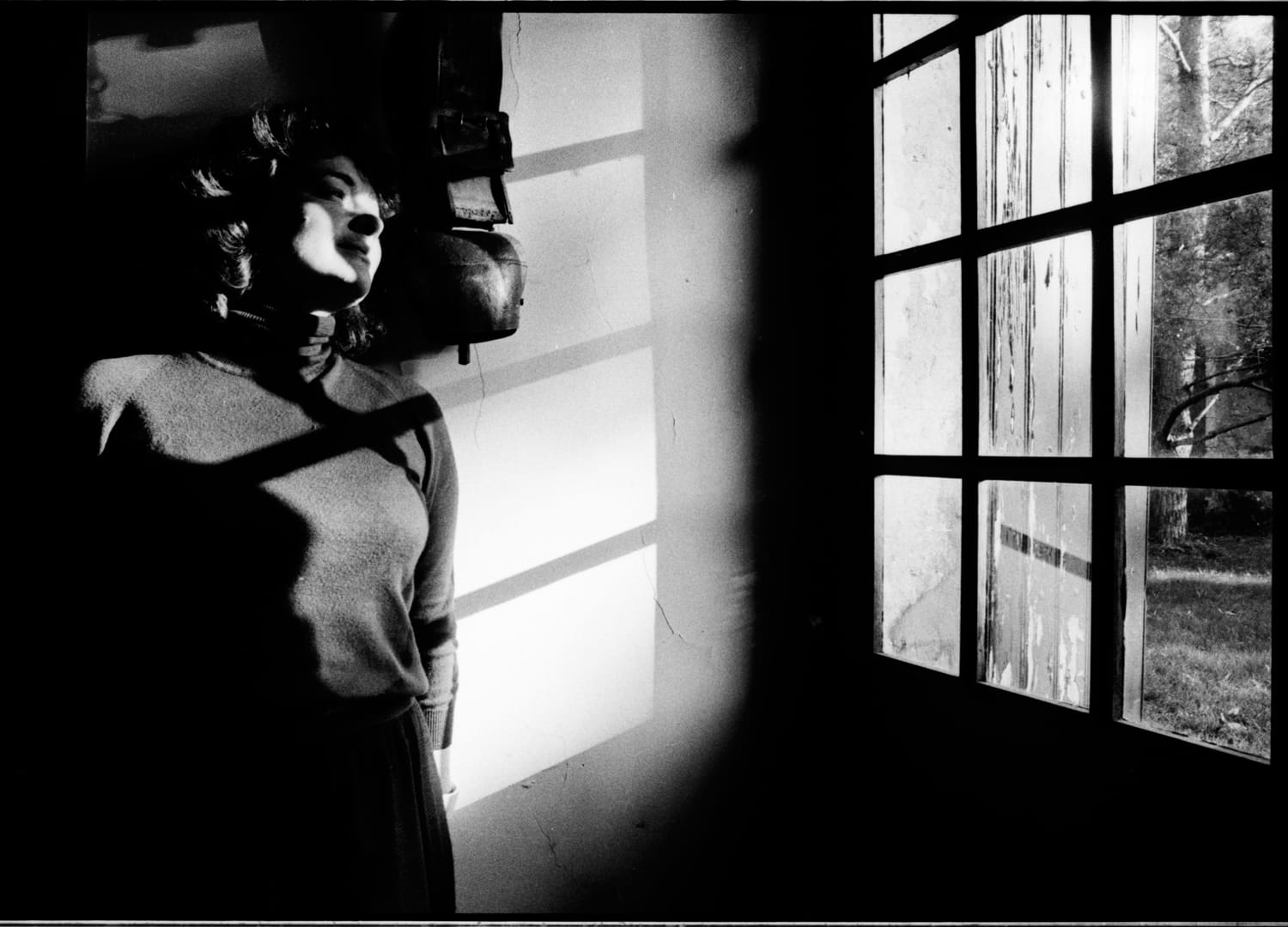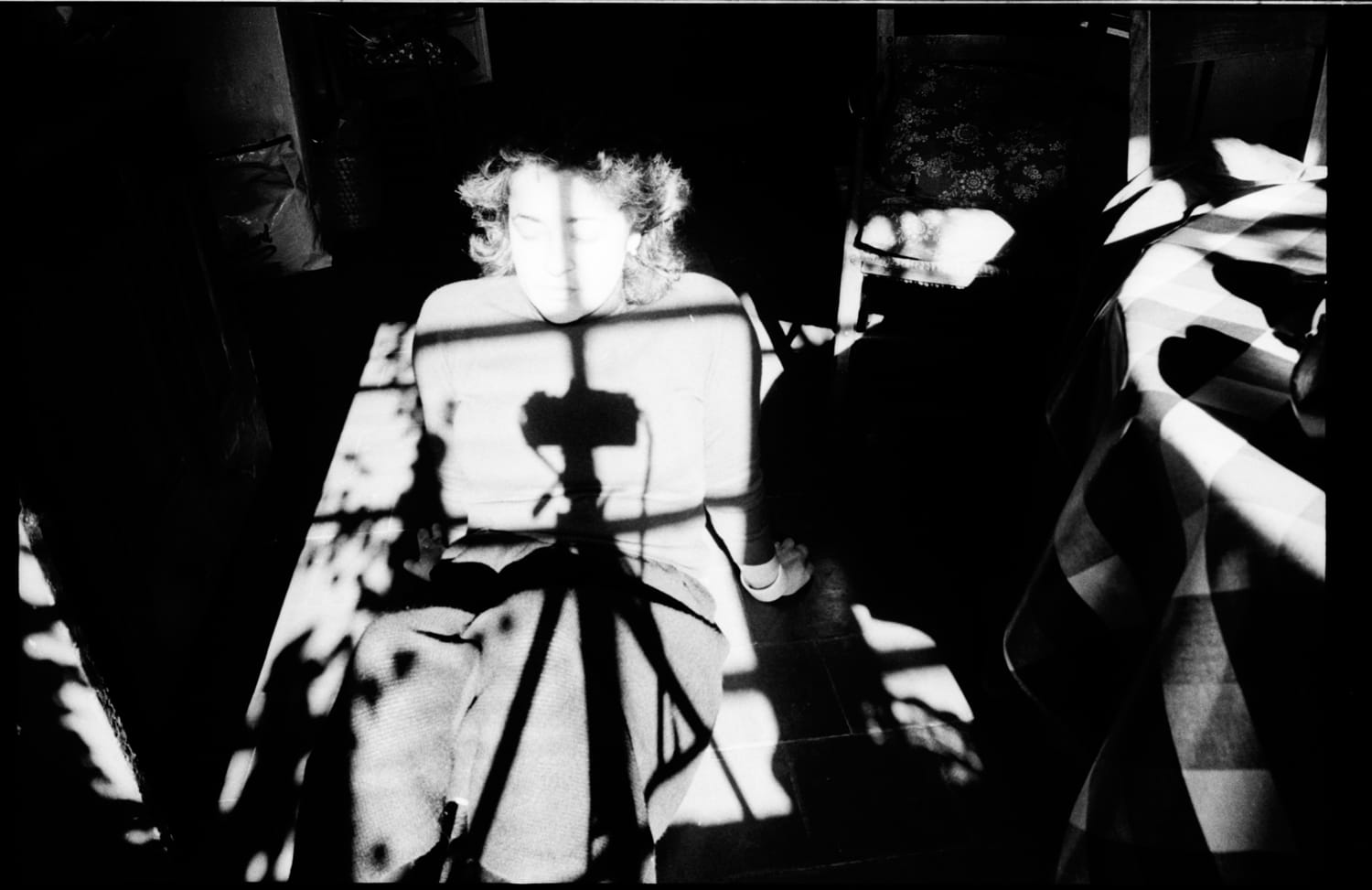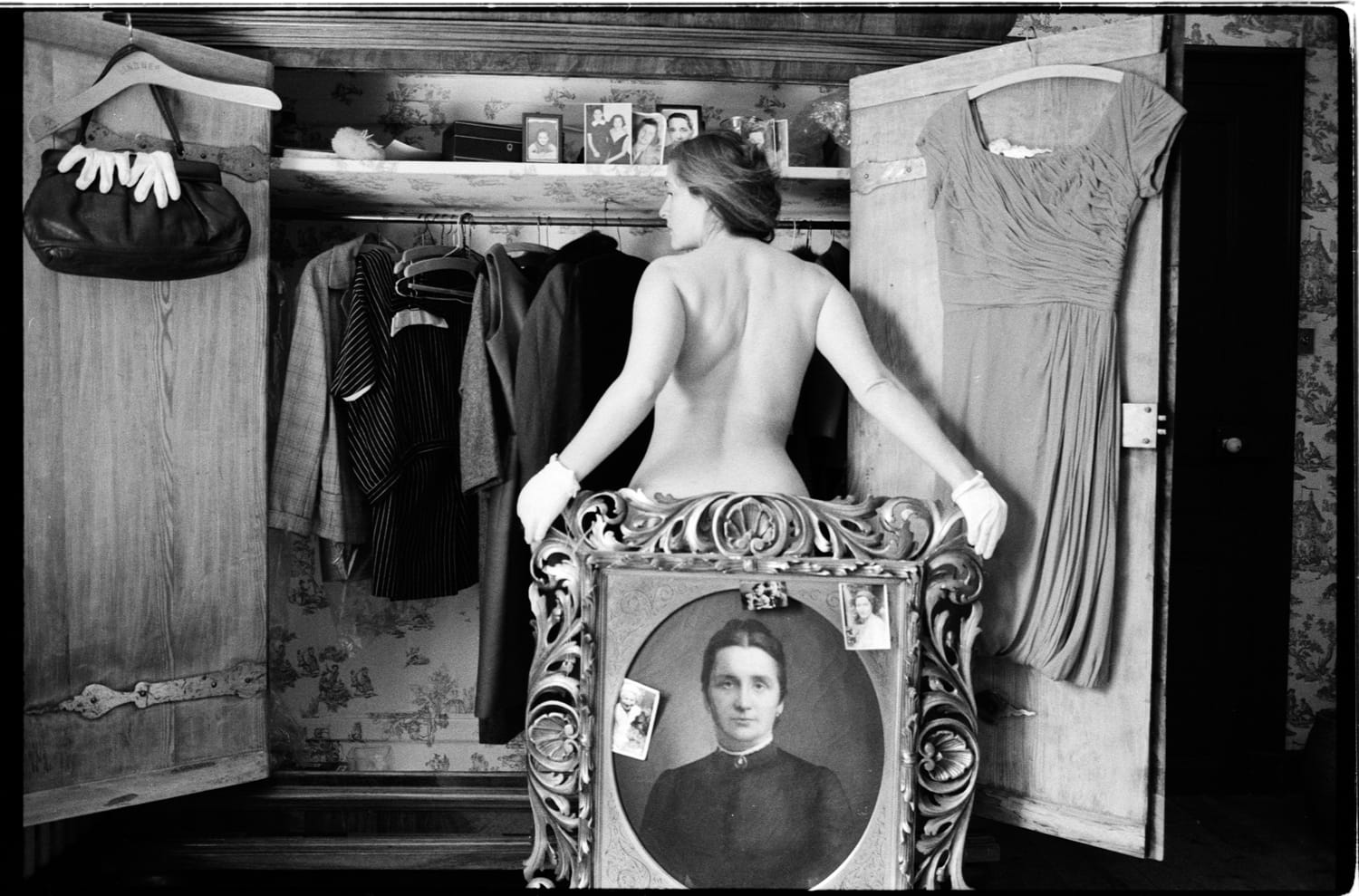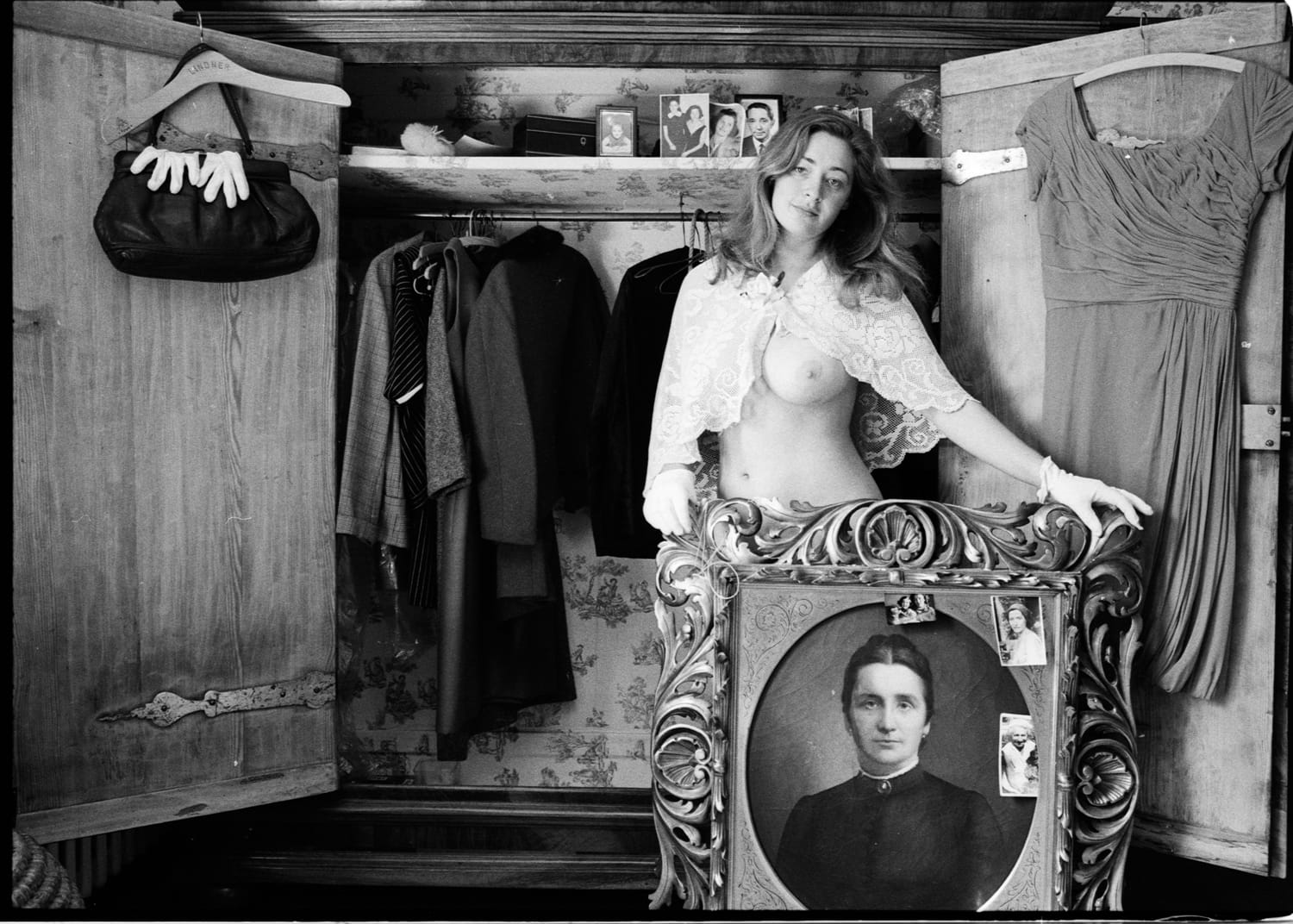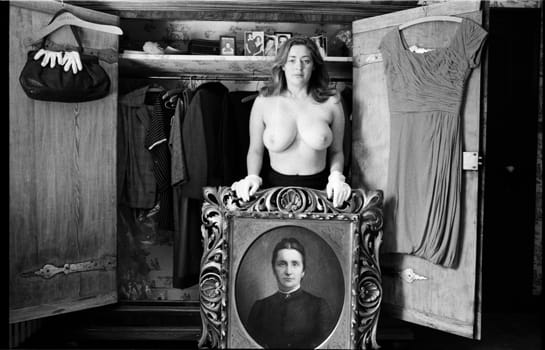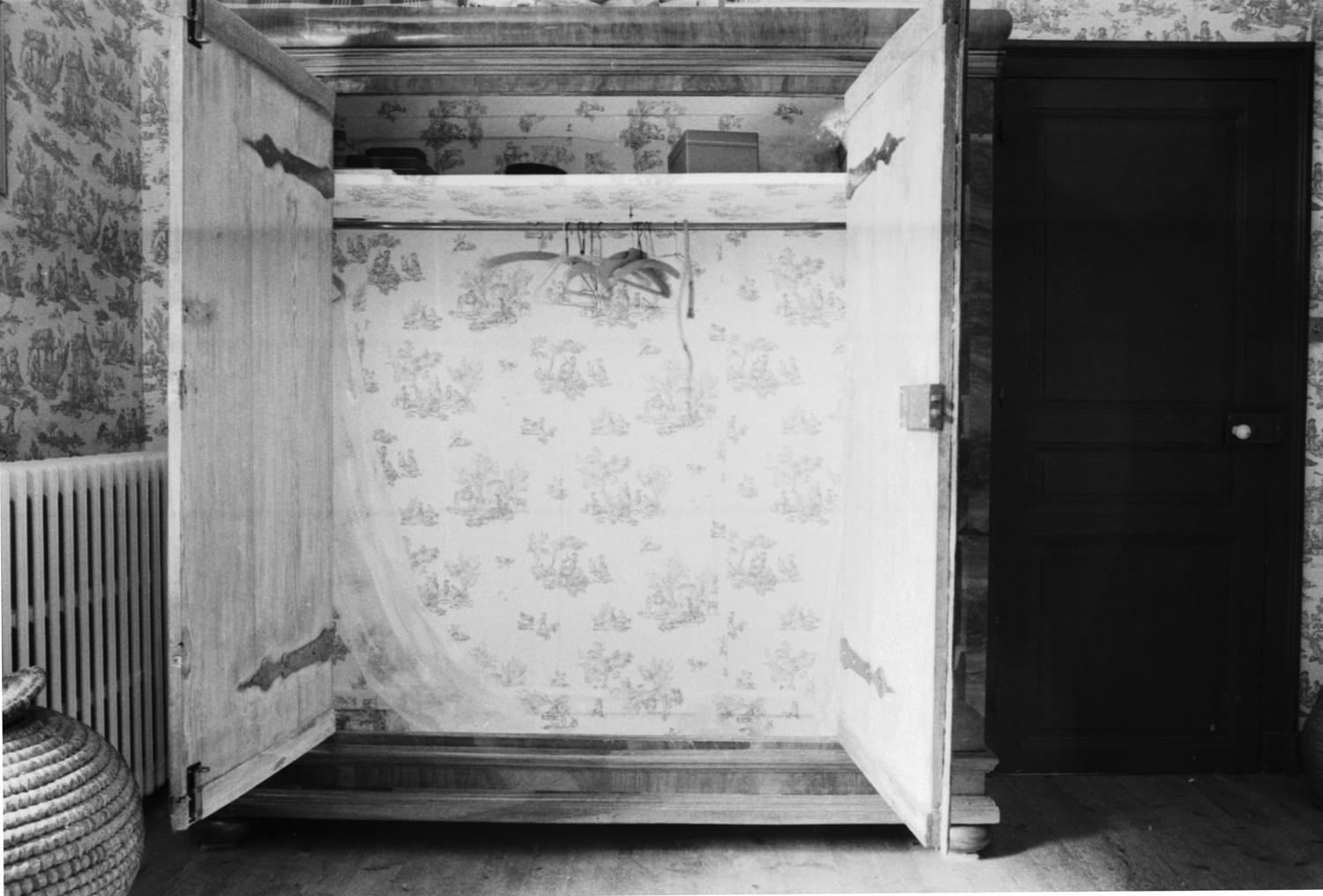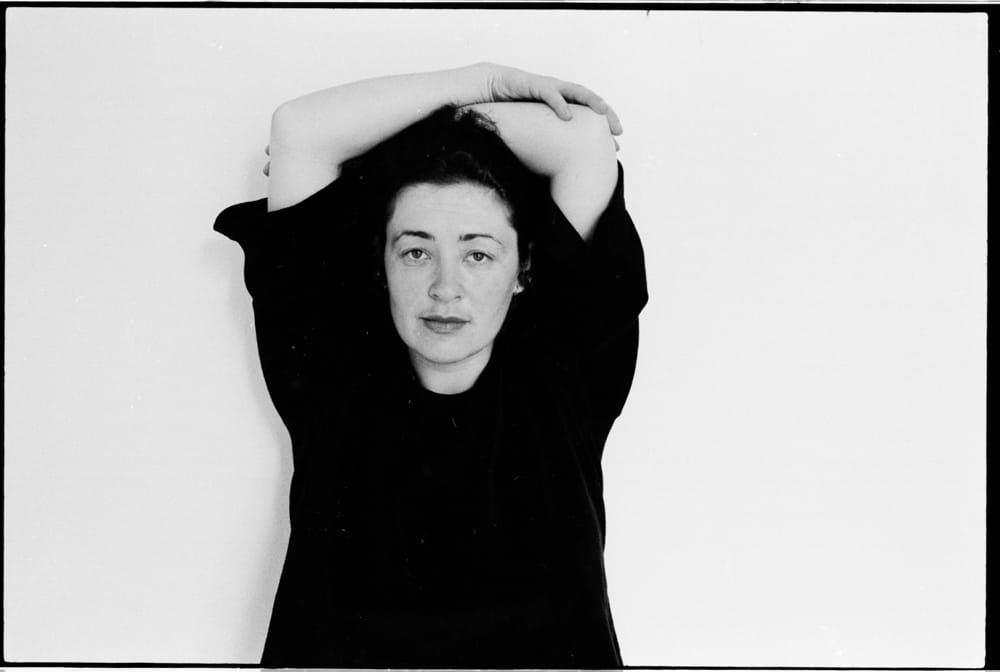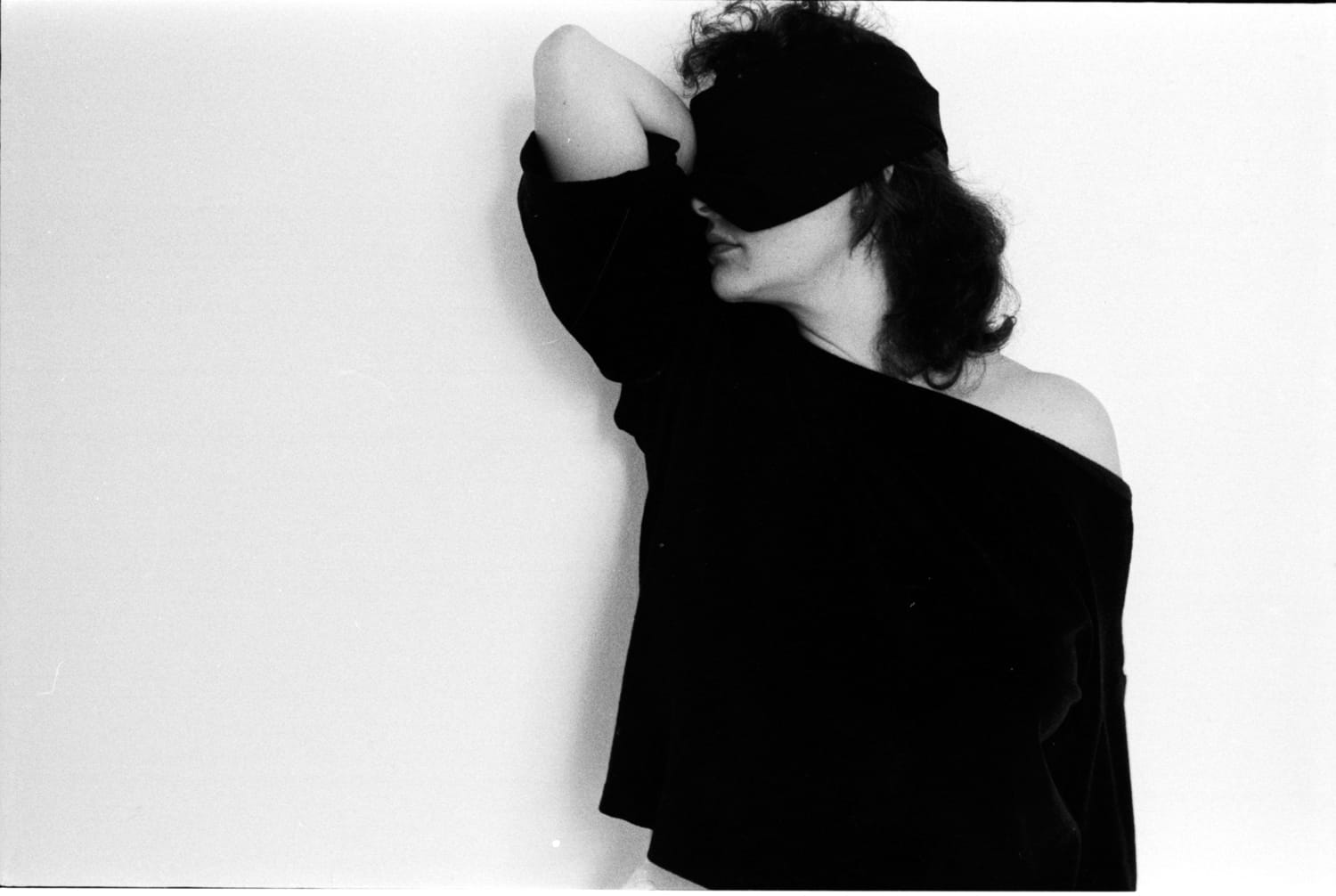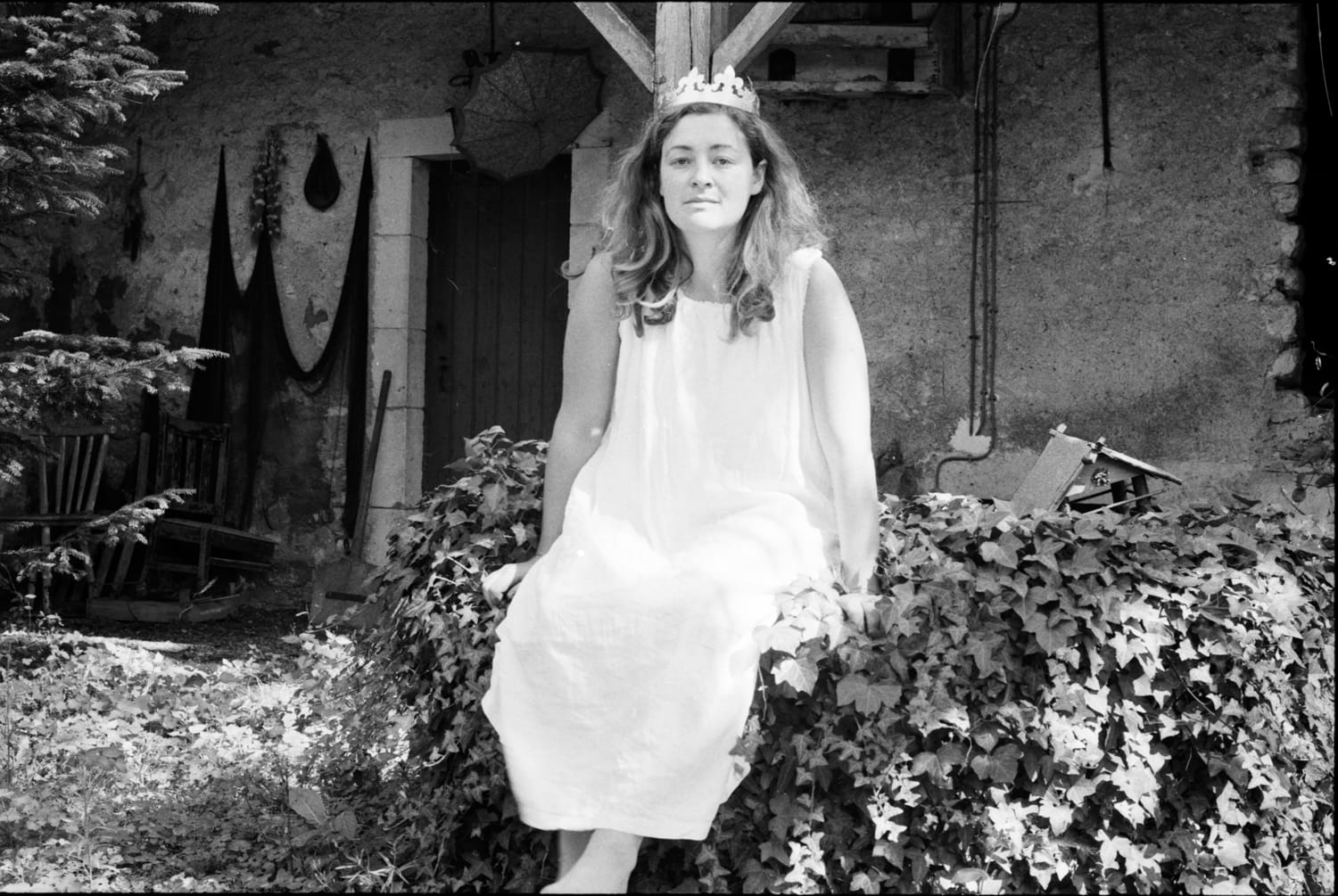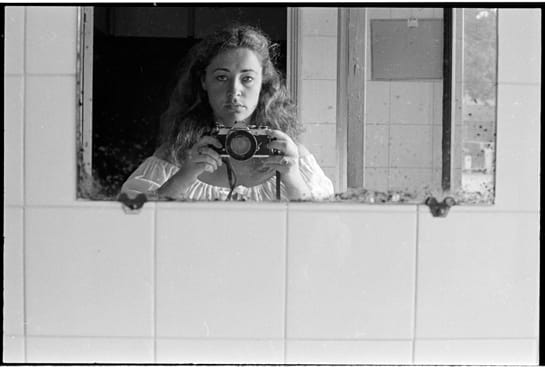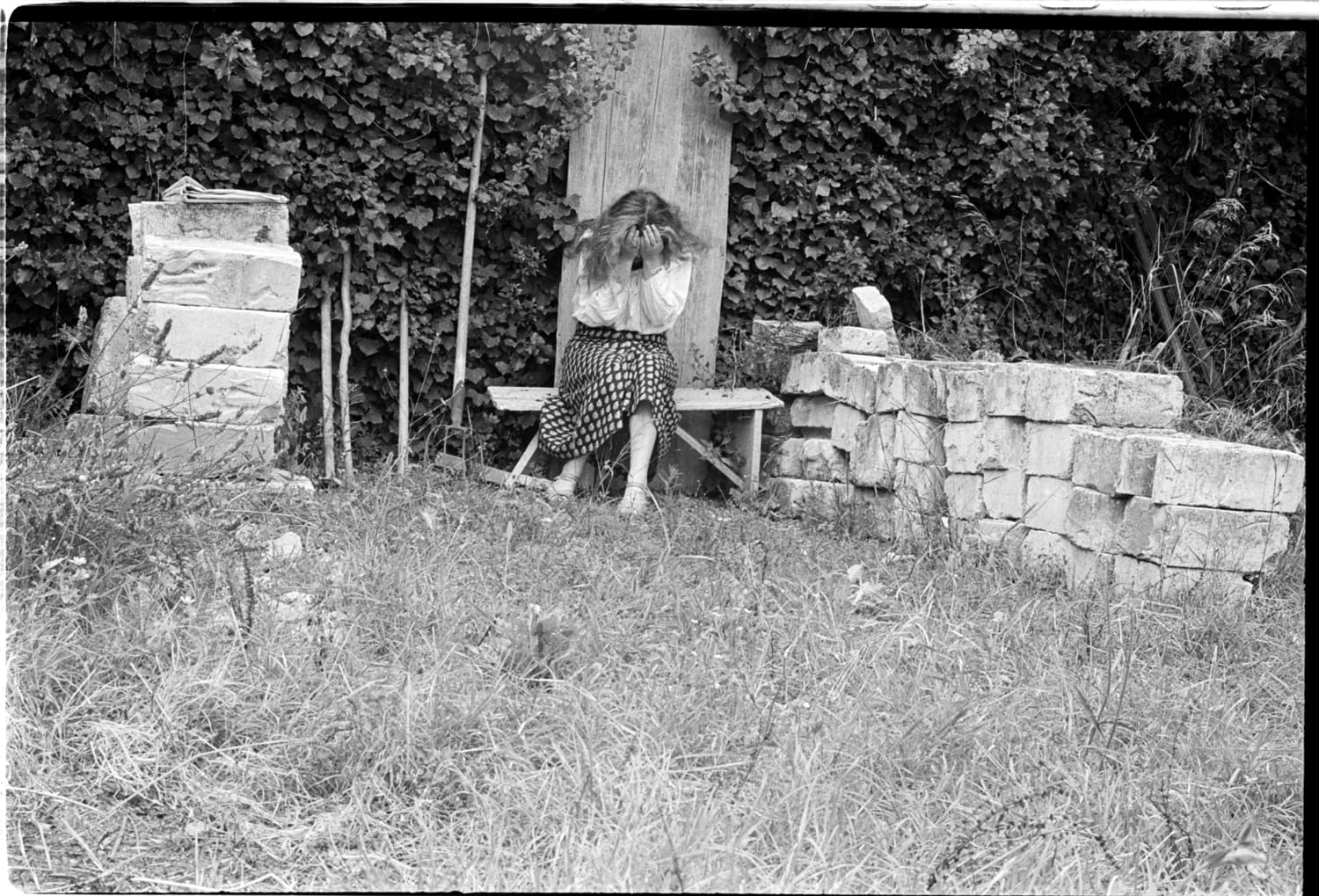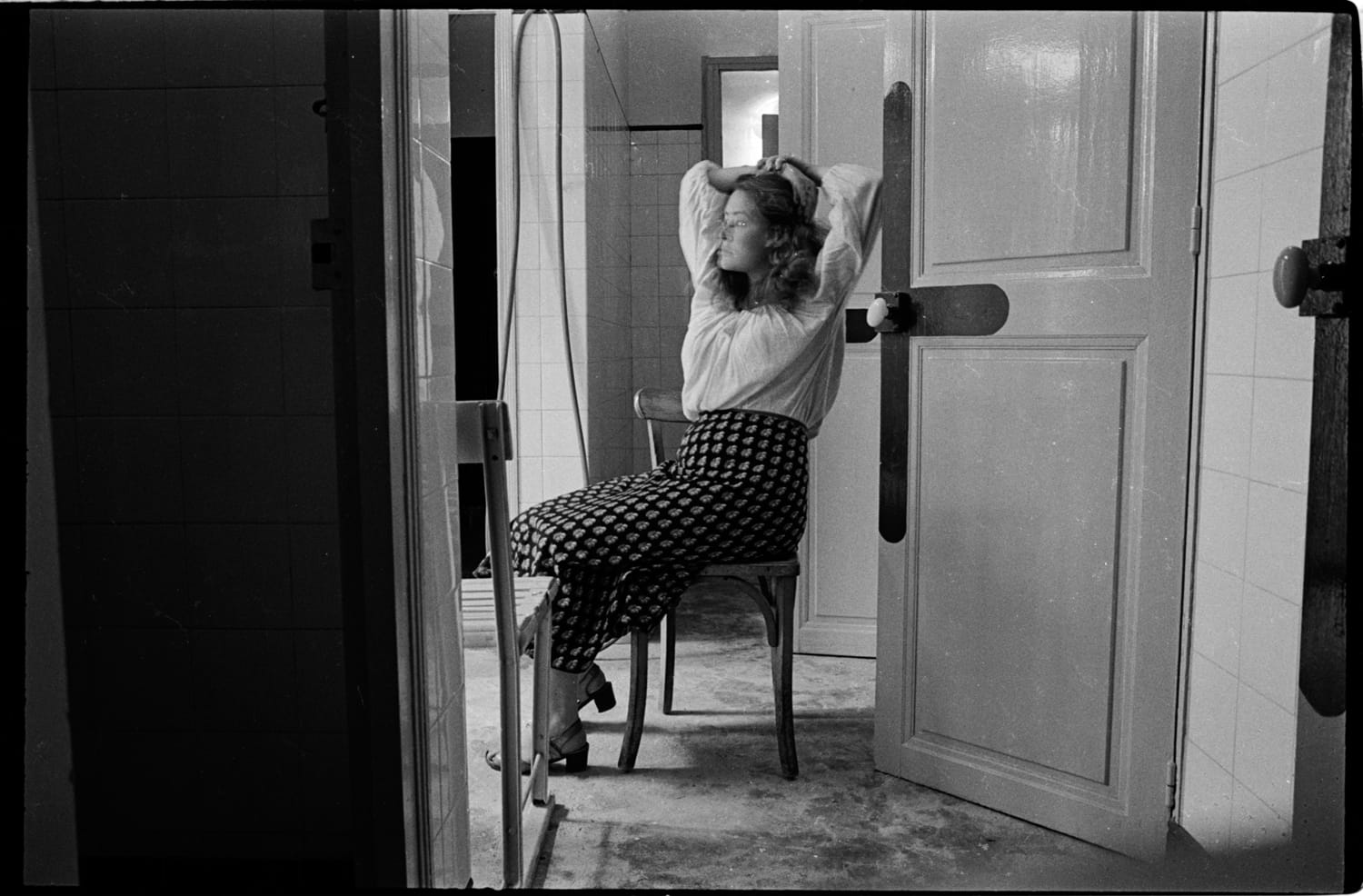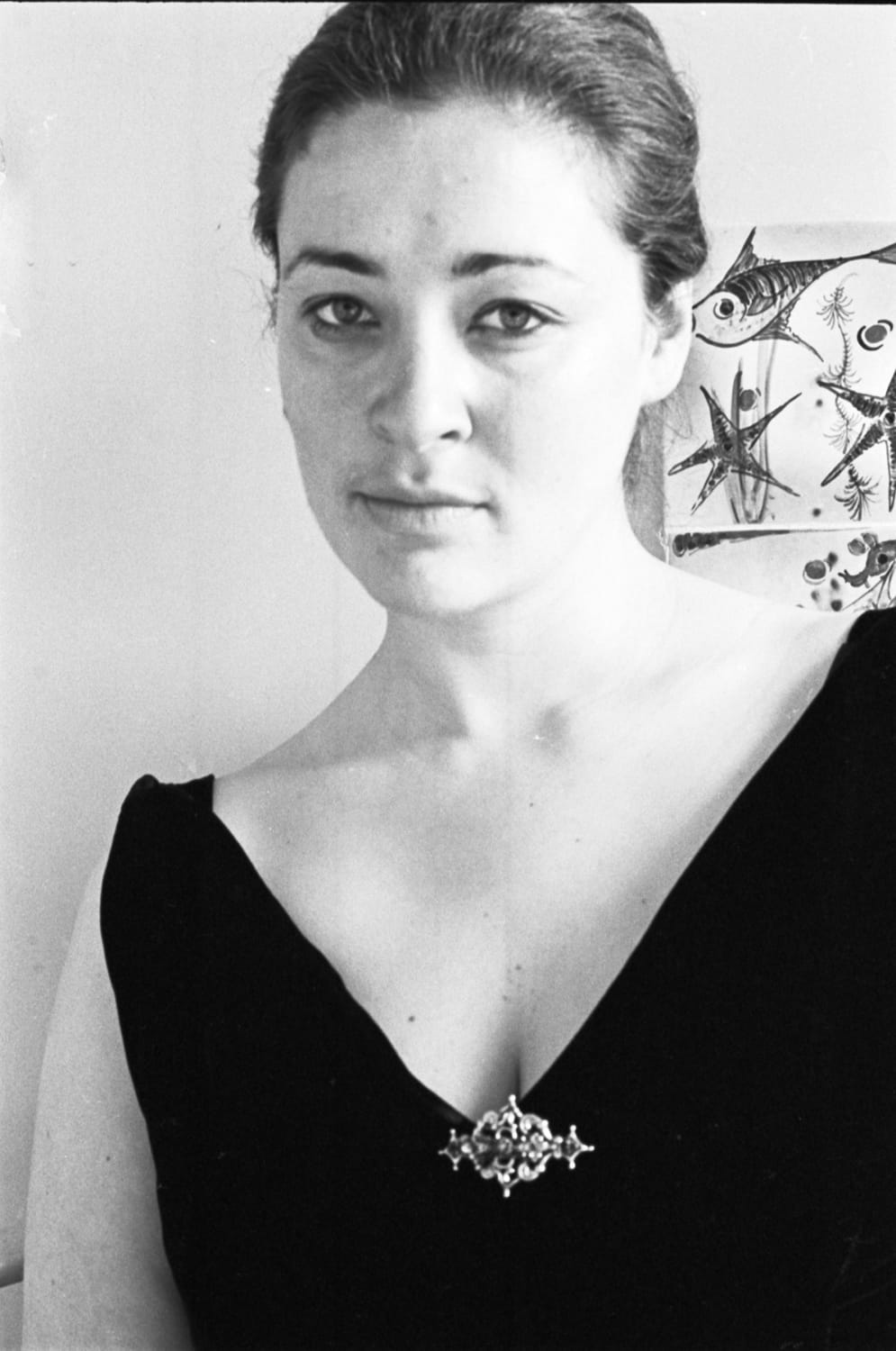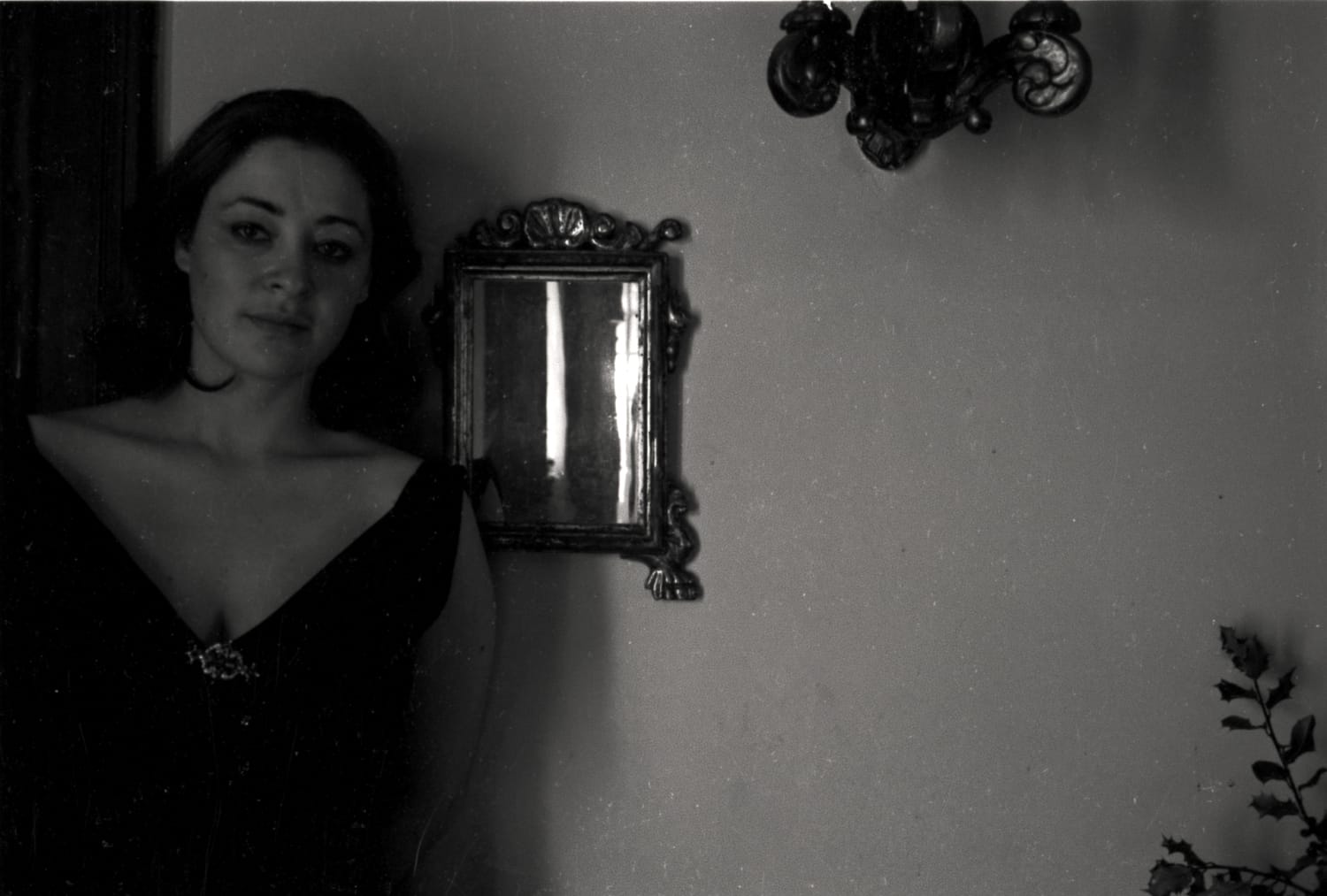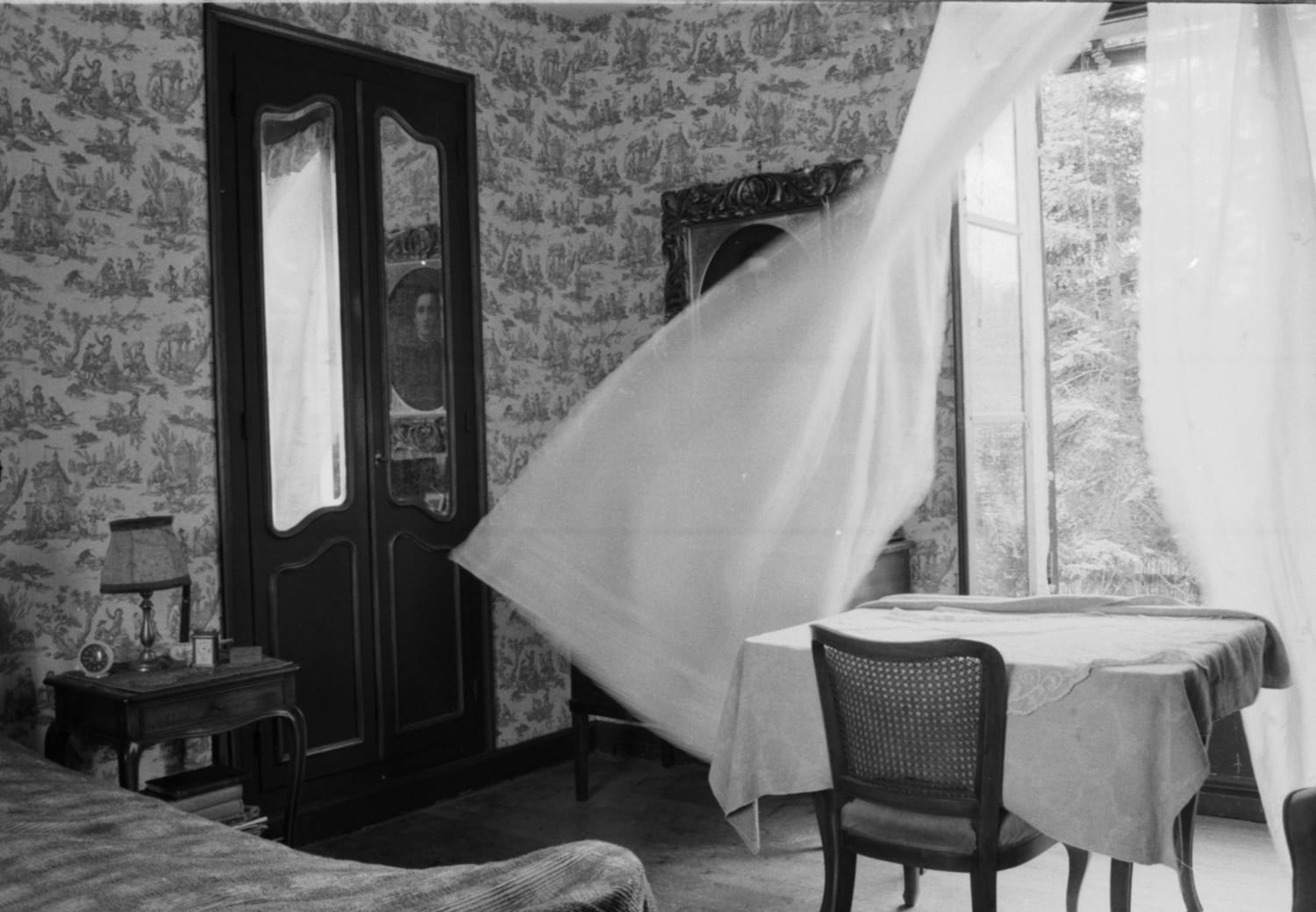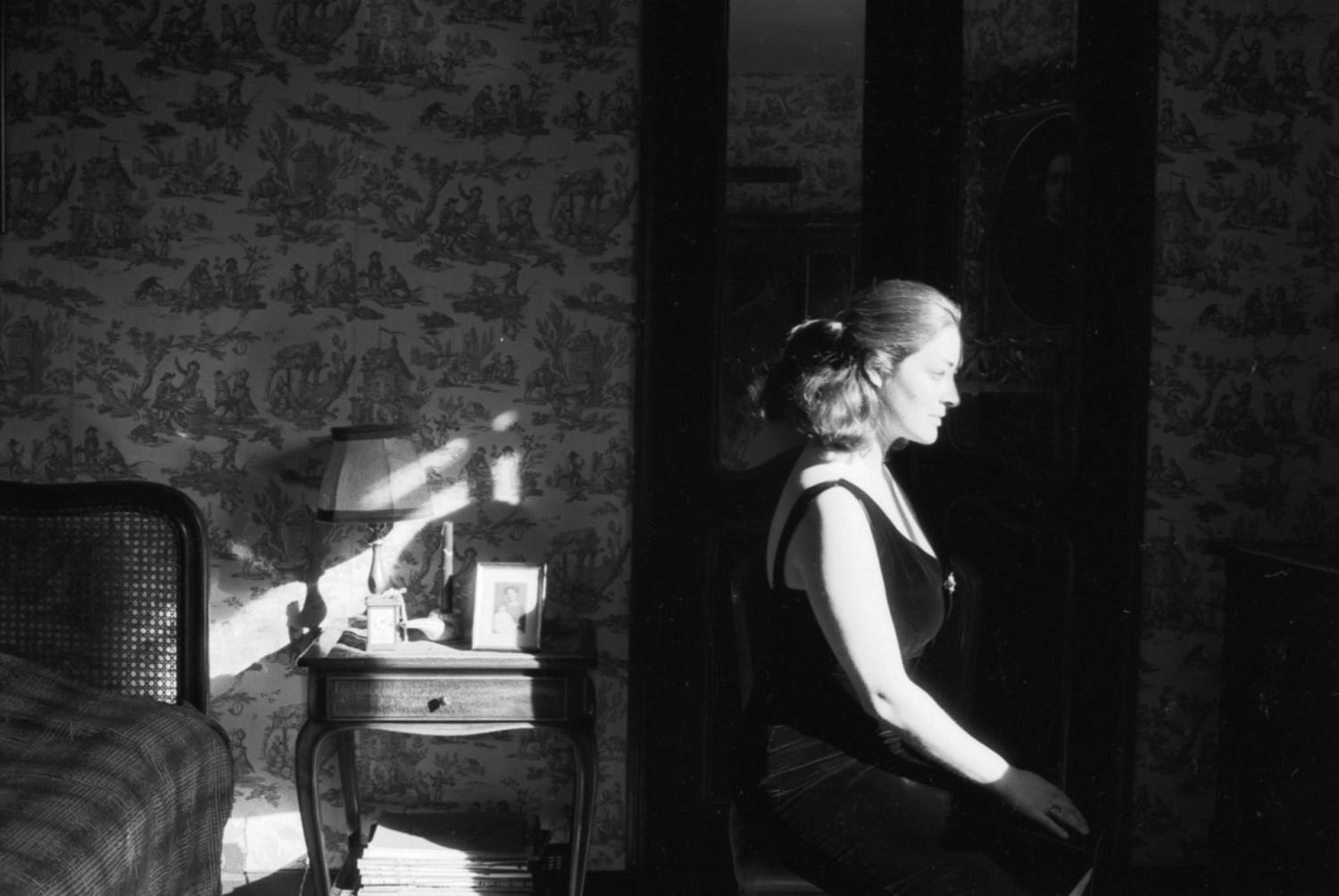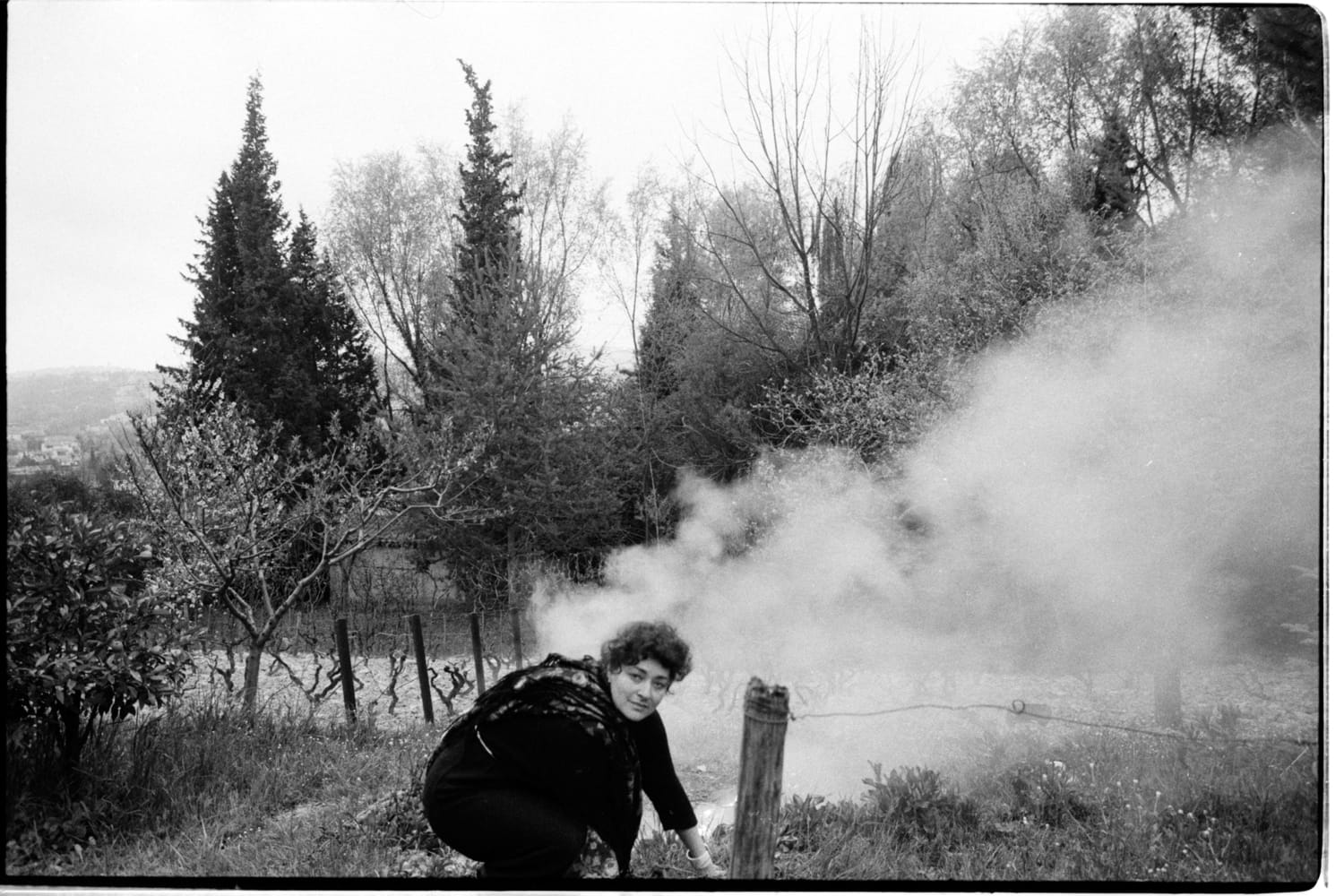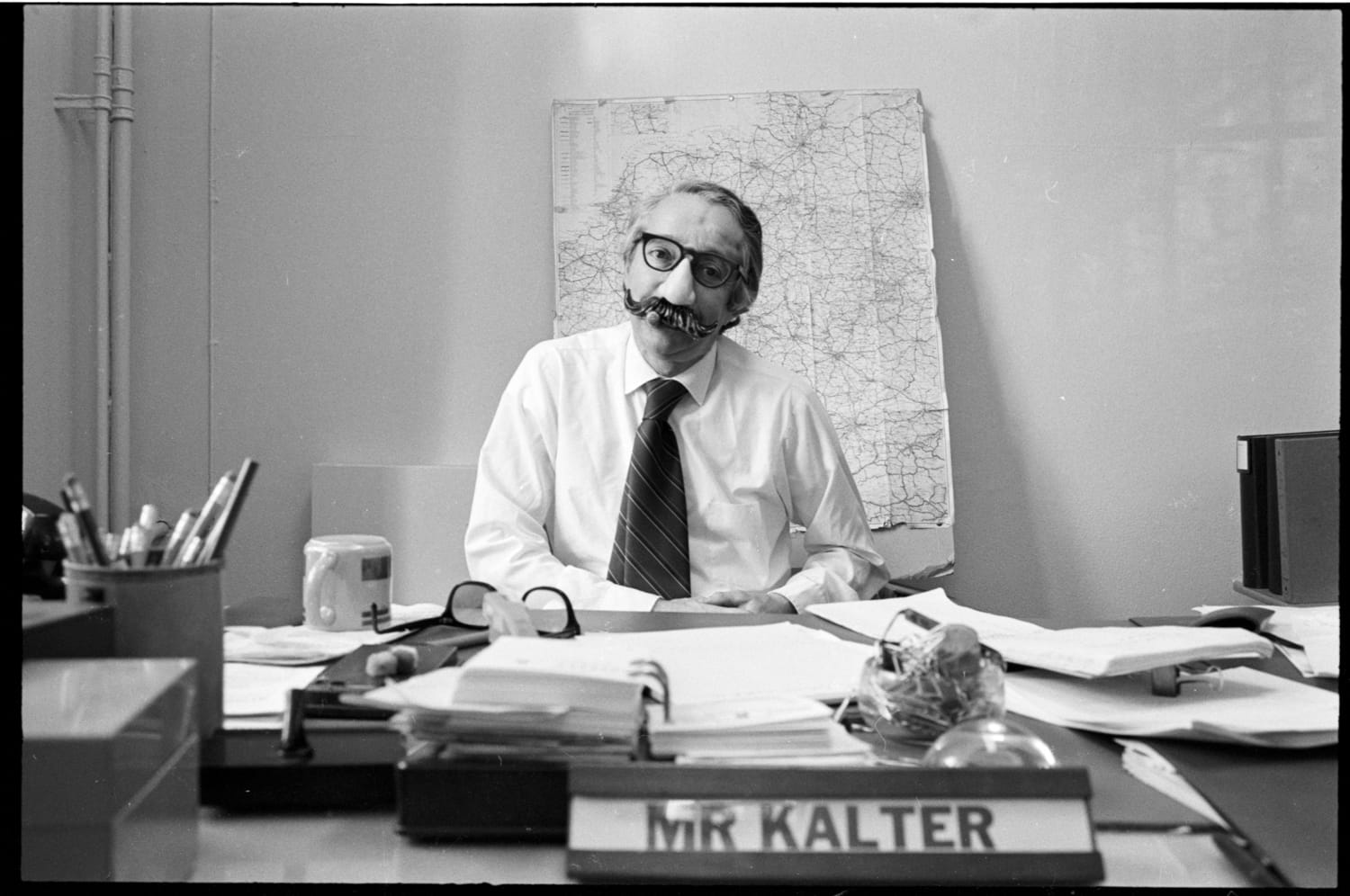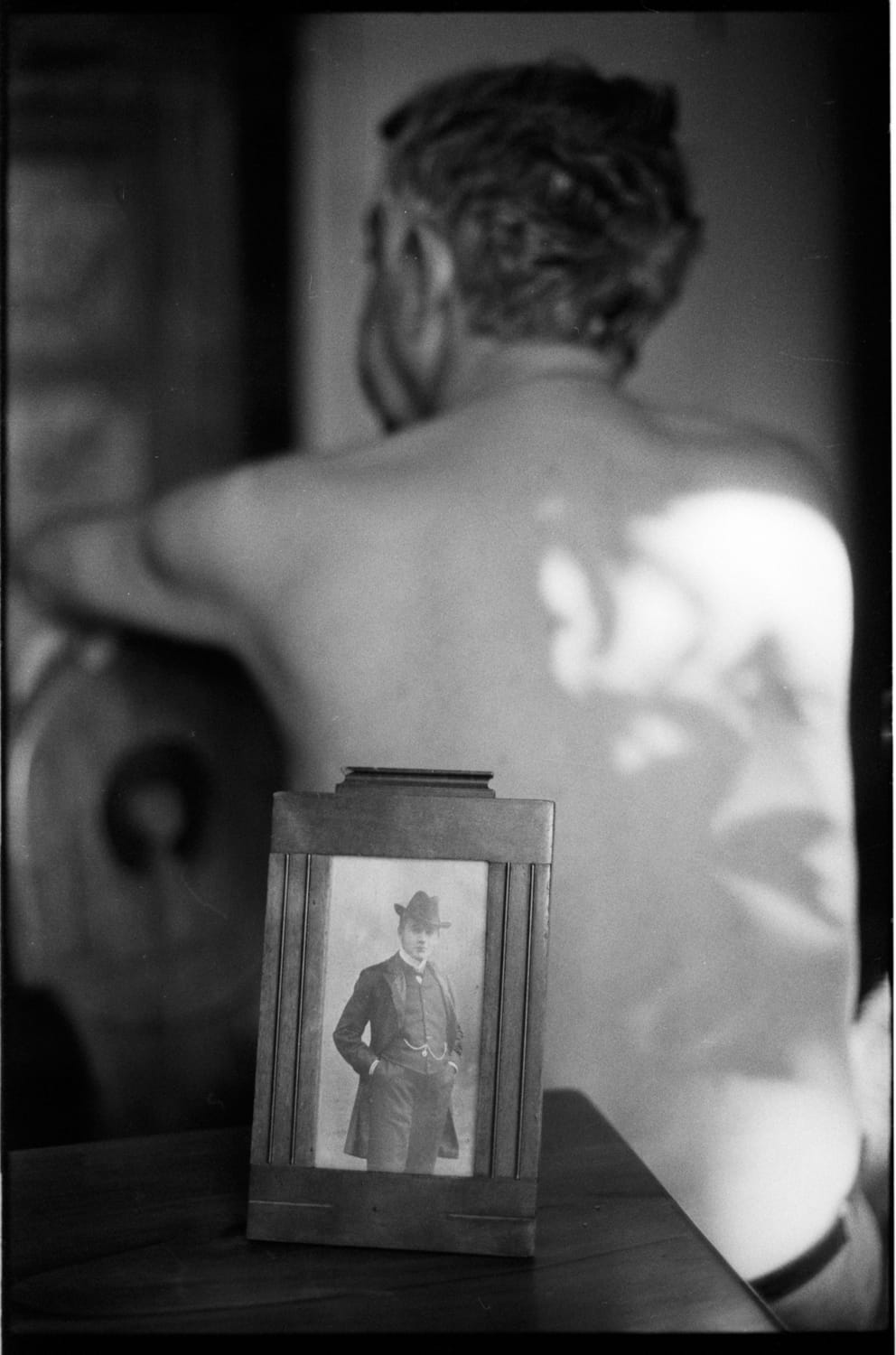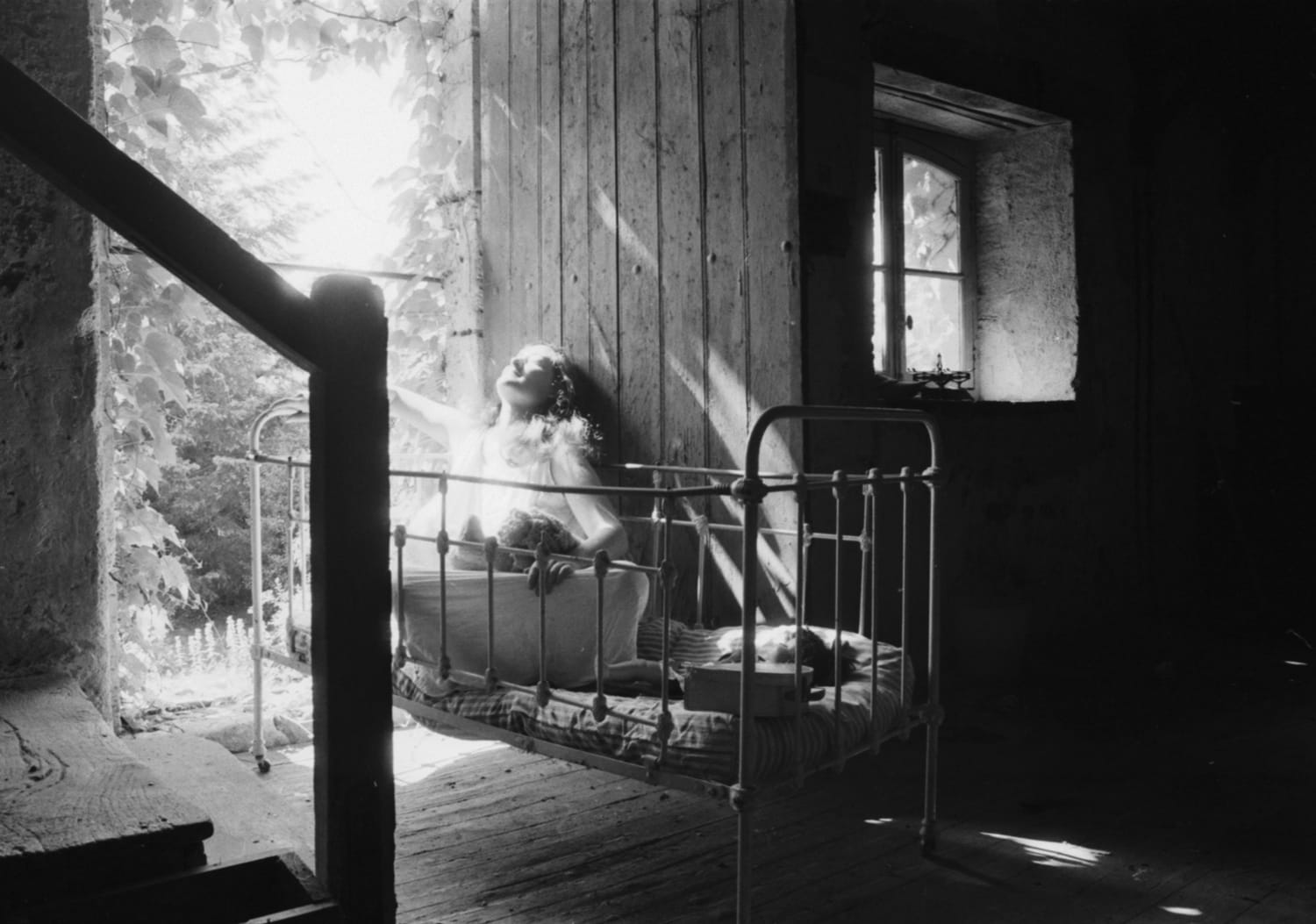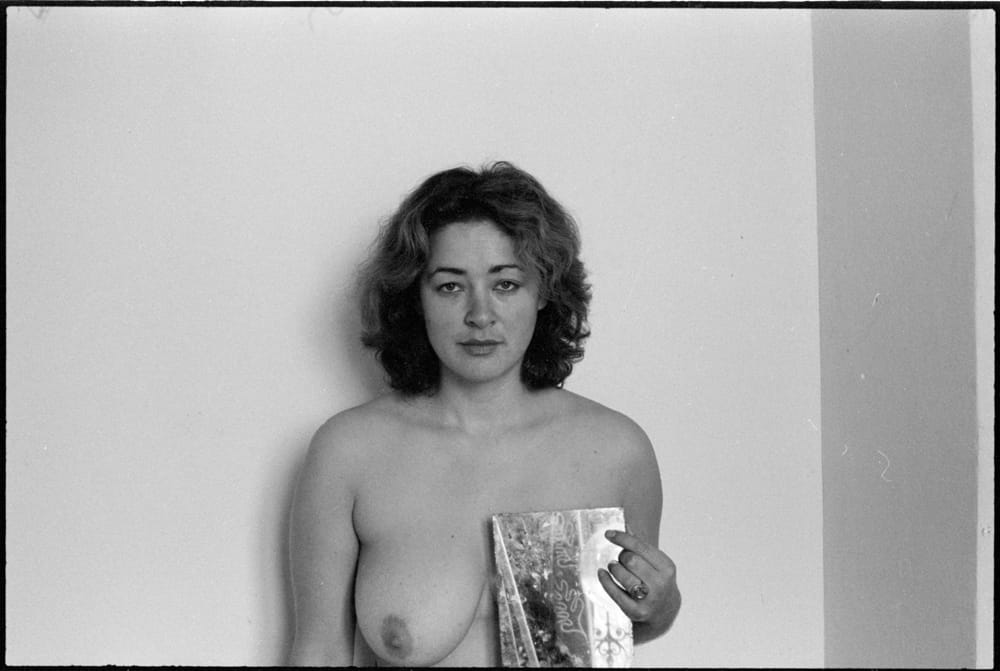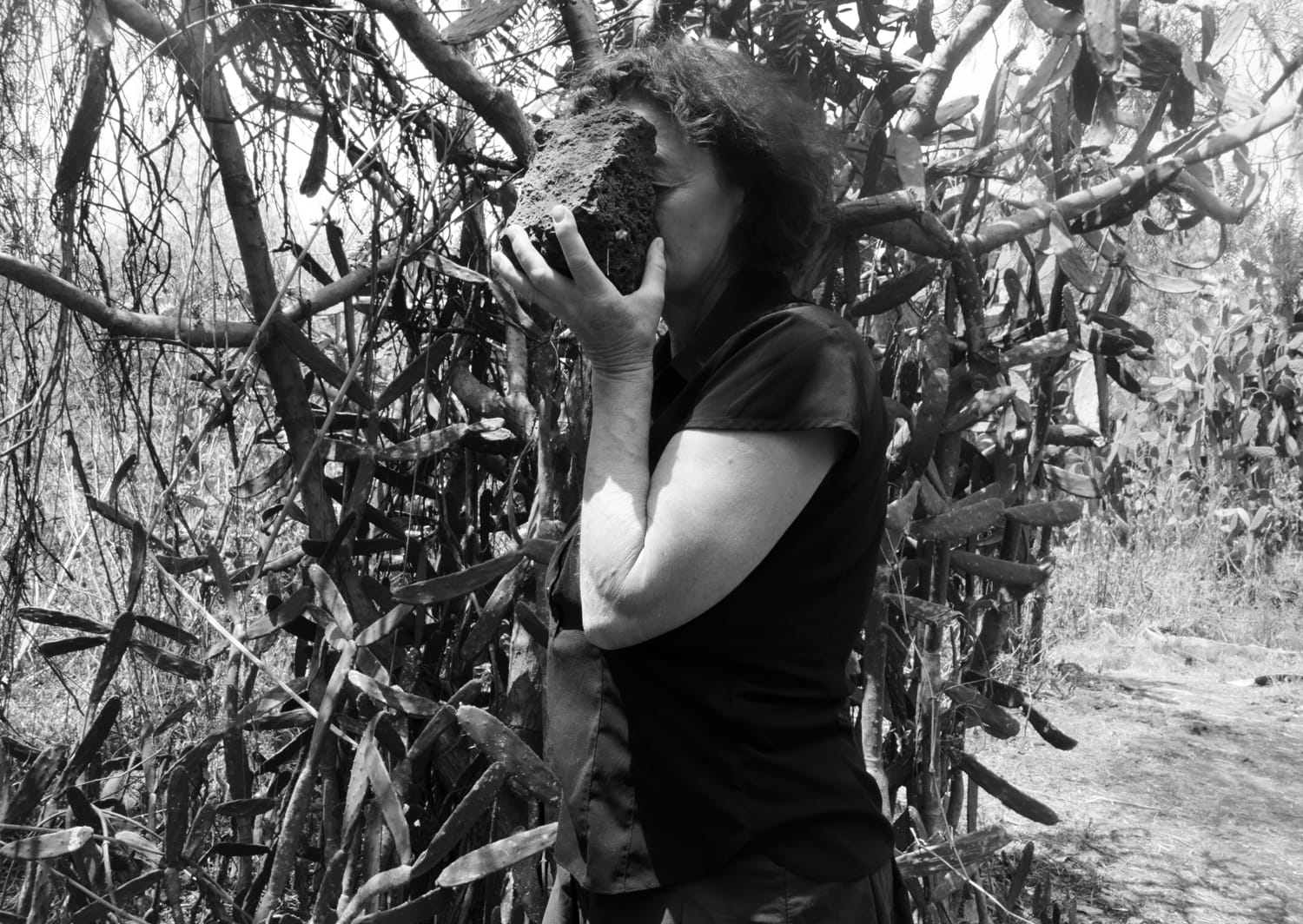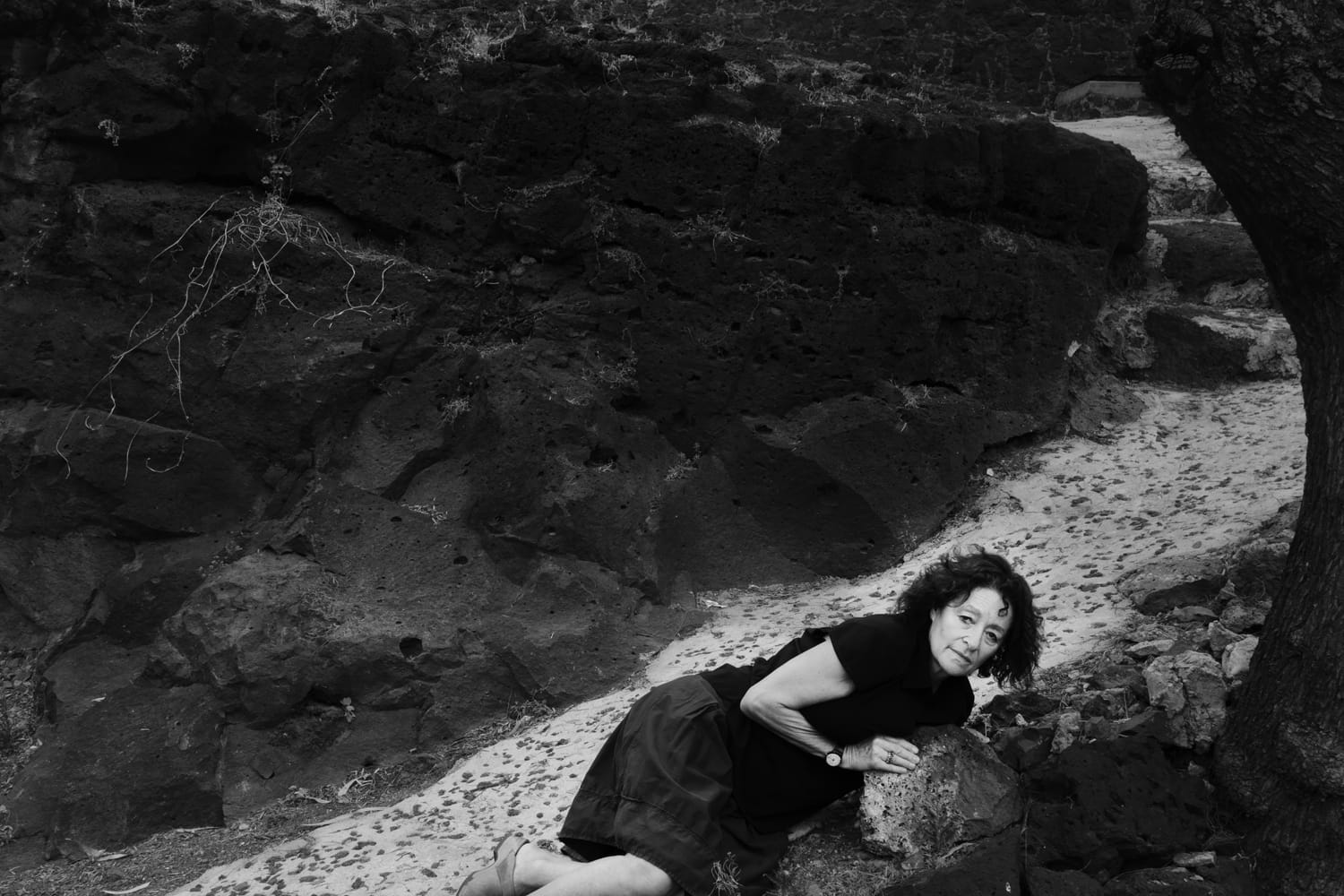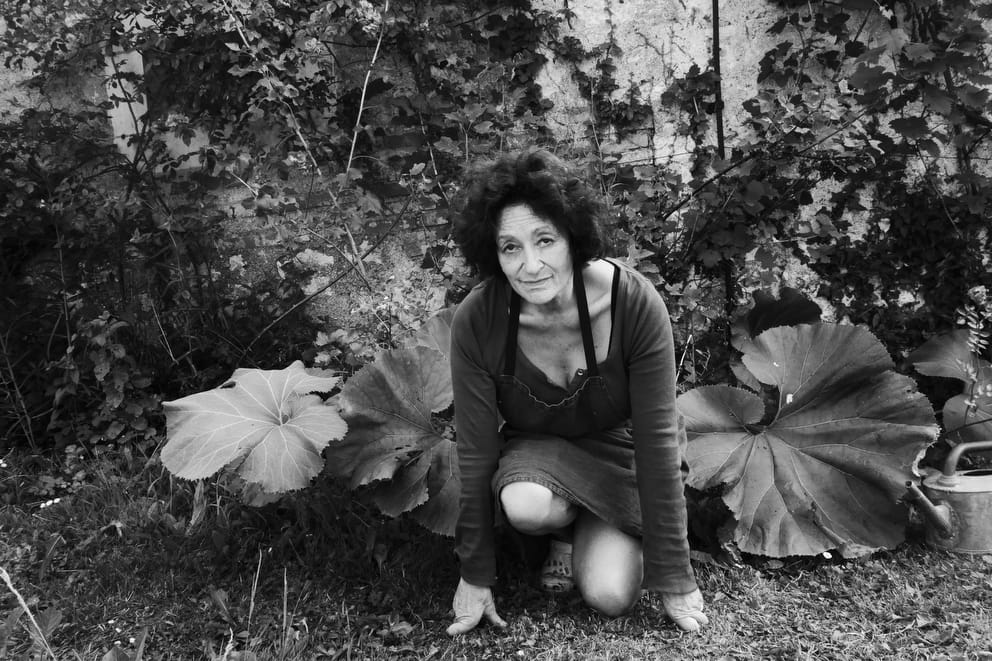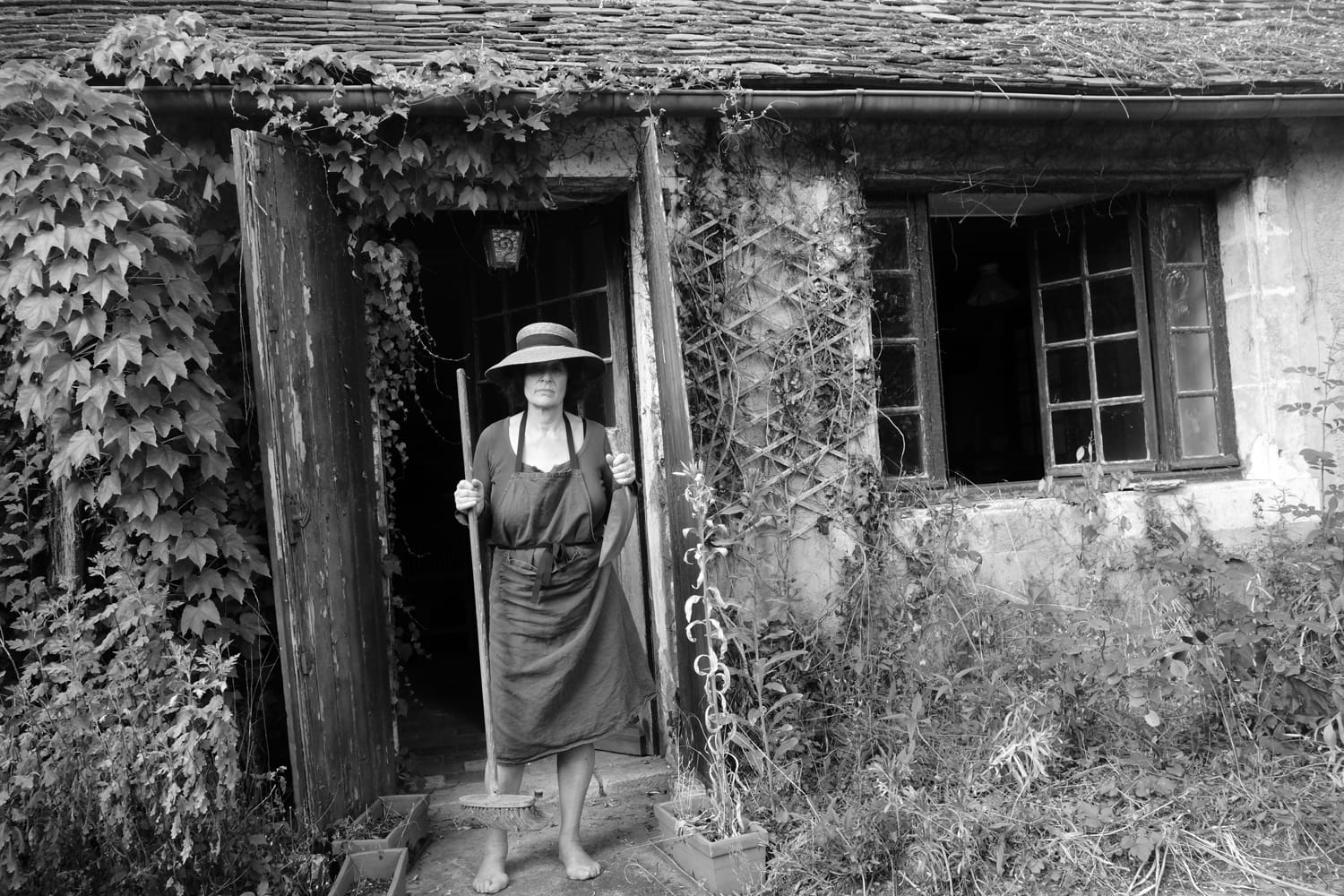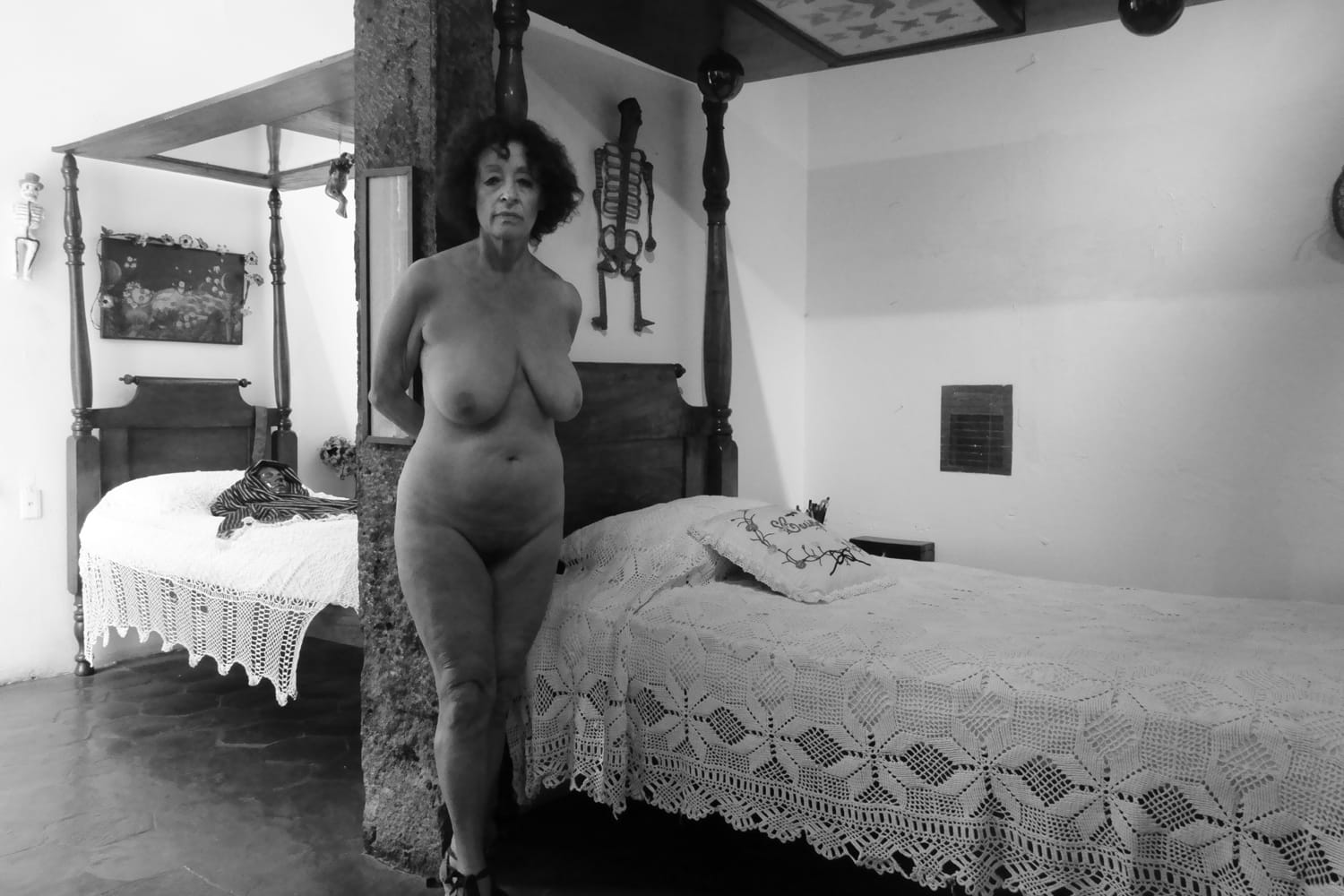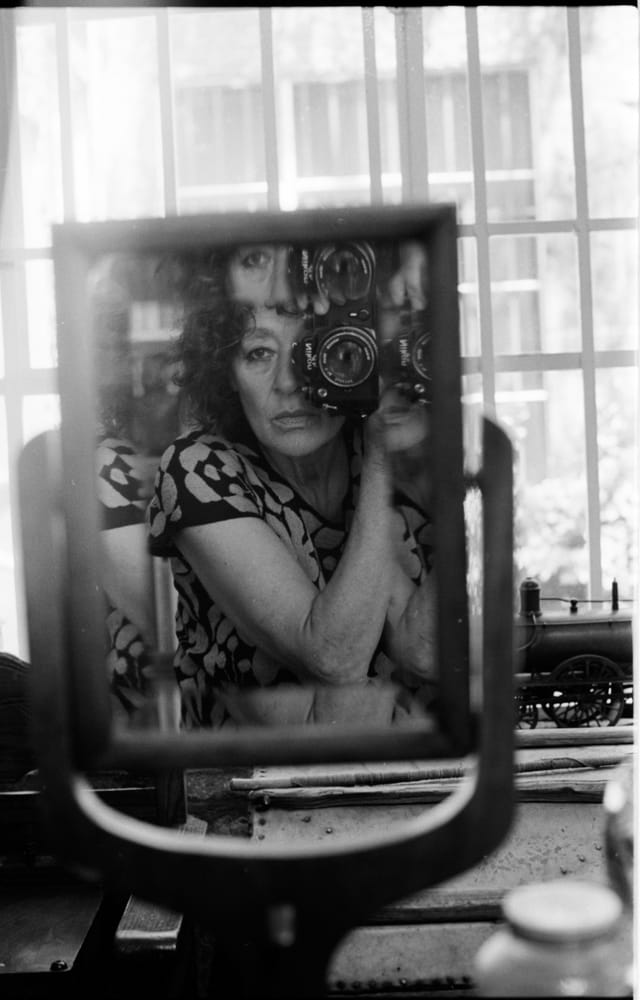Marion Kalter
Photographs
Artboretum
http://www.artboretum.fr/KALTER.html
Marion Kalter’s photographic portraits of exceptional women, Anais Nin, Nadia Boulanger, Susan Sontag, Gina Pane, Joan Mitchell, Gisele Freund –of the composers –Pierre Boulez, John Cage, Marc-Olivier Dupin, Iannis Xenakis — of singers, of musicians –that the photographer has made at rehearsals, concerts, or while visiting her subjects in the intimacy of their own homes — this intimate approach – this complicity – Marion Kalter knew how to establish with her models. This method announces the quest for identity in which she most visibly immersed herself.
The instants that she has caught –-whether professional or from daily life– become landscapes wherein –in each portrait –time stands still.
WIth such liveliness, at the age of 23, Marion Kalter begins her quest by posing in front of her own camera lens. For this process she settles on her family home, where she takes over the space, where she searches, not intending to uncover anything but on a quest. A ghost, caught in the corridor suspended between two buildings, indicates the exhibitionist nudity of an unapproachable presence coming from further than the frankness of the face, already profaning and profane, as if forcing open the prohibited in a secret.
The armoire is open, the clothes are still hanging, the staging operates by additions –in increments, or by additioning together : paintings, gloves, mirrors –then comes the insertion of the body into this framed world. Very young she lost her mother and her grandmother. A self- alienation which insures a game of possession, of security with the chosen elements.
Appropriating the clothing, the objects, the representation and the originality of this body that turns and exposes itself.
Willingness is achieved, a thing among things : the armoire is empty, only the hangers are left. Light crosses the room, her face is solemn. The black of her dress covers the scene. The memories are on the night table. A curtain raised by the wind diffuses clarity and hides a portrait that one can barely discern in the reflection of the pane of a glass door. The old photographs placed in the small vertical frames appear before the sleeping self-portrait. The body is consumed in front of the dancing flames that escape the hearth. The unreal offers itself on the doorstep of the real. The sheets no longer cover the furniture. The table is set. An only presence, a sad and sweet memory calls out. The essence of time itself draws itself in the curls of vapor coming from the soup tureen. Intimacy like a return, personifies itself in the present, each scene from childhood is reinterpreted. The duncecap from school (she didn’t speak the language of this new place), the crown from the Twelfth Night Cake, the epiphany where the face appears, the stuffed animals maintained up against her body (clouds of dust)… these irradiated veils of light like a theatrical obsession of a delicate and deep mystery of being that go back to representations of the veiled and the unveiled. This far away life allows for a return to the self, reconstructs an identity. The clothing expresses the time period of each scene. The hairstyle confirms the choice of suit. The apparition of photography illustrating the 19th Century magazines and continuing ever since…fashion becoming history. A portrait bust among the thorns, a face distanced from its grasp, the frizzies renewing the folliation.
The self portraits that were made with the mirror, the camera held in her hand or on a tripod, the head in a frame reminiscent of the history of photography and above all American photography from 75/76, even before. The father with the Groucho Marx mask inclines his head, he knows that he is going back to America, his path and its end are on the map pinned behind him, the war is over.
The couch where the model stares at the lens assuring self possession and showing herself nude. An open corsage, nudity that expresses love, but experiencing the incapacity to say it face to face and exhibiting it instead.
Marion Kalter knocks at the door of being.
There is a call out to the other in each of her portraits.
Representation smashes this possibility for appearance, imposes itself in the succesion of all of these instants that have been torn out from time.
Objective sweetness and coldness in the substance of time itself that travels towards agony, diffusing a pain, a melancholy of absence, the work of mourning, a quest for the self,
no horizon. As Emmanuel Levinas writes, « The feminine offers a face that goes beyond the face. »
In Mexico, the body is no longer twenty years old. This manifests itself in Frida Kahlo’s bedroom in front of a skeleton from the Day of the Dead. The skeleton is standing at the head of the bed of the artist. In the middle ground lies a canopy above a second bed, with a mirror still further above. This element is the trigger for the painted self-portraits of the aforementioned artist.
But there—nothing–black and white.
Before these plaster characters form a Disney universe, in this factory of new idols, the face becomes a mask, it pierces the image/screen of convention, and comes to trouble the new rituals of the possible celebration. This mortuary mask imposes itself instead of letting itself be seen.
The body is lying down or surprised in its fall on a path materialised from a curve in obscurity. A stone is taken and maintained against the side.
At the threshold of the garden, a shovel, a broom, an automaton, no truth, the masks must fall, as in Gombrowicz.
Eyes are often shut, there is no smile, we are not there to pose. A life with its feelings, its paths, childhood, adolescence, maturity, without trickery, dishonesty, to accept or discover. This comes, flows, continues, always knowing the loss, the engagements, the illusions. The events that fill the space of time. The real that marks each step, constructing and undoing the body, transforming it.
A window is open, nature is grey and streaked with white lines – the numbered days like incisions on prison walls : it is raining.
Jacques Victor Giraud
–
La photographie de portraits de femmes exceptionnelles (Anaïs Nin, Nadia Boulanger, Susan Sontag, Gina Pane, Joan Mitchell, Gisèle Freund…), de compositeurs (Pierre Boulez, John Cage, Marc-Olivier Dupin, Iannis Xenakis…) de chanteurs, de musiciens… que la photographe réalise lors de répétitions, de concerts ou dans l’intimité de leurs domiciles, au cours d’entretiens… cette approche intimiste, cette complicité, Marion Kalter a su l’établir avec ses modèles. Cette démarche énonce une quête d’identité où visiblement elle était plongée.
Les instants saisis (professionnels, quotidiens) deviennent des paysages où le temps se fige dans l’arrêt de chaque portrait. Tout en continuant cette vivacité, Marion Kalter (à l’âge de vingt trois ans) va entreprendre cette quête préalablement citée en se mettant en scène devant l’objectif.
Cela s’ancre dans la maison de famille, elle investit les lieux, elle fouille, non pas intentionnalité de dévoilement mais de recherche. Un fantôme, saisi dans le couloir suspendu qui relie deux corps de bâtiments, indique la nudité exhibitionniste d’une présence inabordable venant comme de plus loin que la franchise du visage déjà profanant et profanée, comme si était forcé l’interdit d’un secret.
L’armoire est ouverte, les vêtements sont toujours pendus, la mise en scène opère par ajouts, peinture, gants, miroirs…, puis vient l’insertion du corps dans ce monde cadré (très jeune, elle perd sa mère et sa grand-mère). Une aliénation première de soi qui assure avec les éléments choisis un jeu de possession, de sécurité. S’approprier les vêtements, les objets, les représentations et cette originalité du corps qui tourne et s’expose. La volonté est atteinte, chose parmi les choses: l’armoire est vide, seuls les cintres sont accrochés.
La lumière traverse la pièce, le visage est solennel. Le noir de la robe englobe la scène. Les souvenirs sont sur la table de nuit. Un rideau soulevé par le vent diffuse la clarté et masque un portrait qui se laisse discerner dans le reflet de la vitre d’une porte. Les anciennes photographies placées dans de petits cadres verticaux s’érigent devant l’autoportrait couché. Le corps se consume devant les flammes qui dansent et s’échappent de l’âtre. L’irréel s’offre au seuil du réel.
Les draps ne recouvrent plus le mobilier. La table est dressée. Une seule présence, un triste et doux souvenir fait appel. L’essence du temps lui-même se dessine dans les boucles de vapeur provenant de la soupière.
L’intimité comme un retour se personnifie au présent, chaque scène de l’enfance est réinterprétée. Le bonnet d’âne à l’école (elle ne parlait pas la langue de ce nouveau lieu), la couronne de la galette des rois (l’épiphanie où apparaît le visage), les peluches maintenues contre le corps (qui ont à voir avec pluches: flocons de poussières)… ces voiles irradiés de lumière comme une obsession théâtrale d’un délicat et grave mystère de l’être qui remonte dans ces représentations d’un voilé /dévoilé. Cette vie lointaine alloue un retour sur soi, reconstruit une identité.
Les vêtements énoncent l’époque de chaque scène. La chevelure confirme le choix du tailleur. L’apparition de la photographie illustre les magazines du XIX qui depuis s’enchaînent (la mode devient l’histoire). Buste parmi les épines, visage distancié de sa préhension, les frisottis renouvellent la feuillaison.
Les autoportraits réalisés avec le miroir, l’appareil tenu à la main ou sur pied, la tête dans un cadre rappellent l’histoire de la photographie et surtout celle américaine des années 75/76… Bien avant… Le père avec le masque de Groucho Marx incline la tête, il sait qu’il retourne en Amérique, son parcours et sa fin sont sur la carte épinglée derrière lui, la guerre est finie.
Le canapé où le modèle fixe l’objectif assure la possession de soi et se montre nu. Corsage ouvert, nudité qui exprime l’amour, mais éprouve l’incapacité à le dire dans un face à face et l’exhibe. Marion Kalter frappe à la porte de l’être.
Il y a un appel à l’autre dans tous ces autoportraits. La représentation éclot, cette possibilité d’apparence s’impose dans cette succession de tous ces instants arrachés au temps.
Douceur et froideur objective, dans la substance du temps lui même qui va à l’agonie, diffusent une douleur, une mélancolie de l’absence, un travail de deuil, une quête de soi. Aucun horizon, « le féminin offre un visage qui va au-delà du visage » (Emmanuel Lévinas).
Au Mexique, le corps n’a plus vingt ans. Il le manifeste dans la chambre de Frida Khalo devant un squelette provenant de la fête des morts. Il est debout devant le lit de cette artiste. Au second plan se trouve un baldaquin (au-dessus d’un deuxième lit) avec un miroir pour ciel. Cet élément est le déclencheur des peintures autoportraits de l’artiste citée.
Mais là… rien …du noir et blanc. Devant les personnages en plâtre de l’univers de Disney, dans cette fabrique de nouvelles idoles, le visage devient masque, il perce l’image/écran des convenances, vient troubler les nouveaux rituels de la possible fête. Ce masque mortuaire s’impose au lieu de laisser voir.
Le corps est couché ou surpris dans sa chute sur un sentier matérialisé d’une courbe dans l’obscurité. Une pierre est prise et maintenue contre la face.
Au seuil du jardin, une pelle, un balai, un automate, aucune vérité, il faut faire tomber les masques ce qui est cher à Witold Gombrowicz.
Les yeux sont souvent fermés, il n’y a aucun sourire, nous ne sommes pas là pour poser.
Une vie avec ses sentiments, son parcours, l’enfance, l’adolescence, la maturité, sans tricherie, malhonnêteté, filouterie à accepter ou à découvrir. Cela vient, coule, se poursuit (tout en sachant la perte), ses engagements, ses illusions. Les évènements qui remplissent les espaces de temps. Le réel qui marque à chaque pas, construit et défait le corps, le transforme.
Une fenêtre est ouverte, la nature est grise et striée de traits blancs (les jours sont énumérés d’incisions sur les murs des prisons): il pleut.
Jacques Victor Giraud
https://issuu.com/marionkalter/docs/180520compress-herstory-marionkalte
